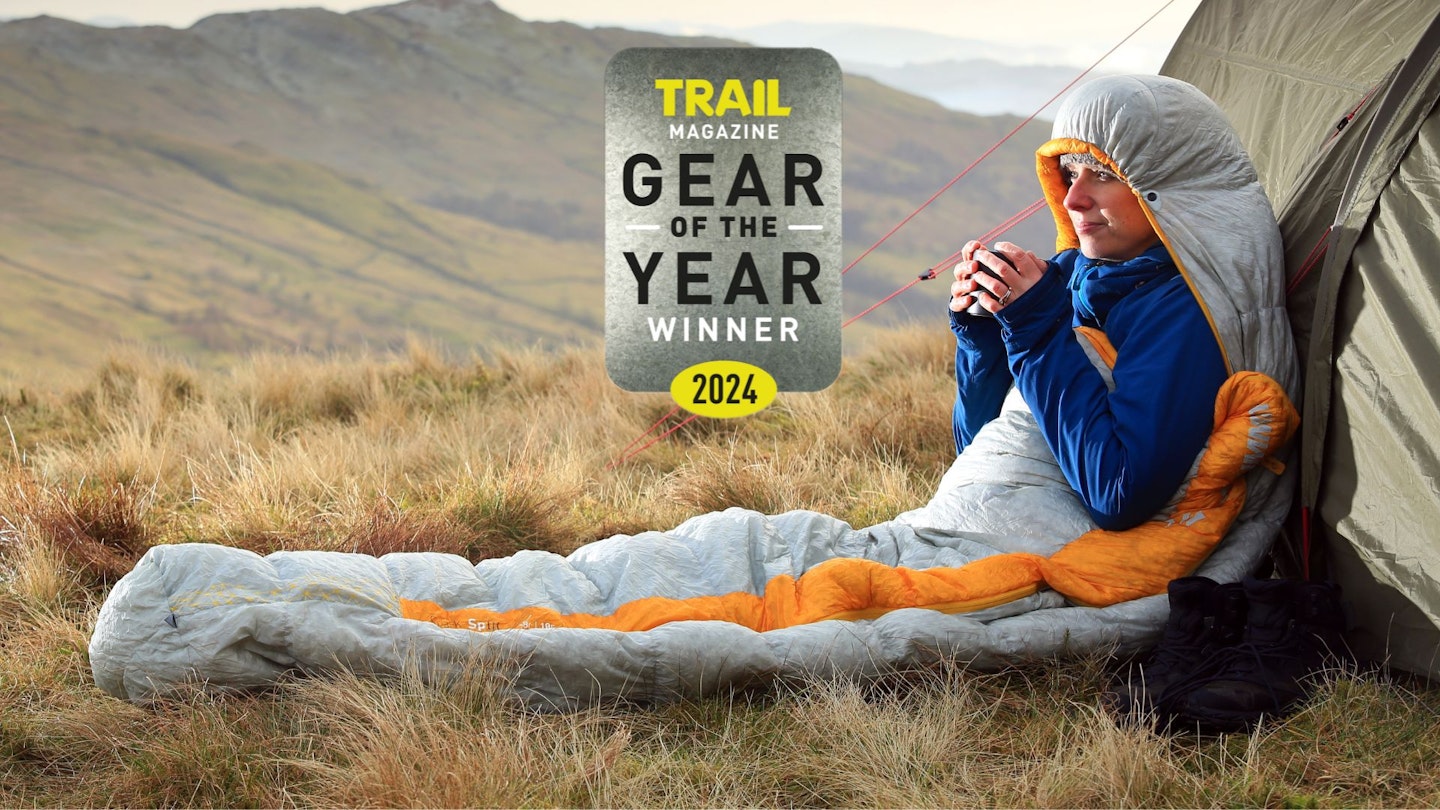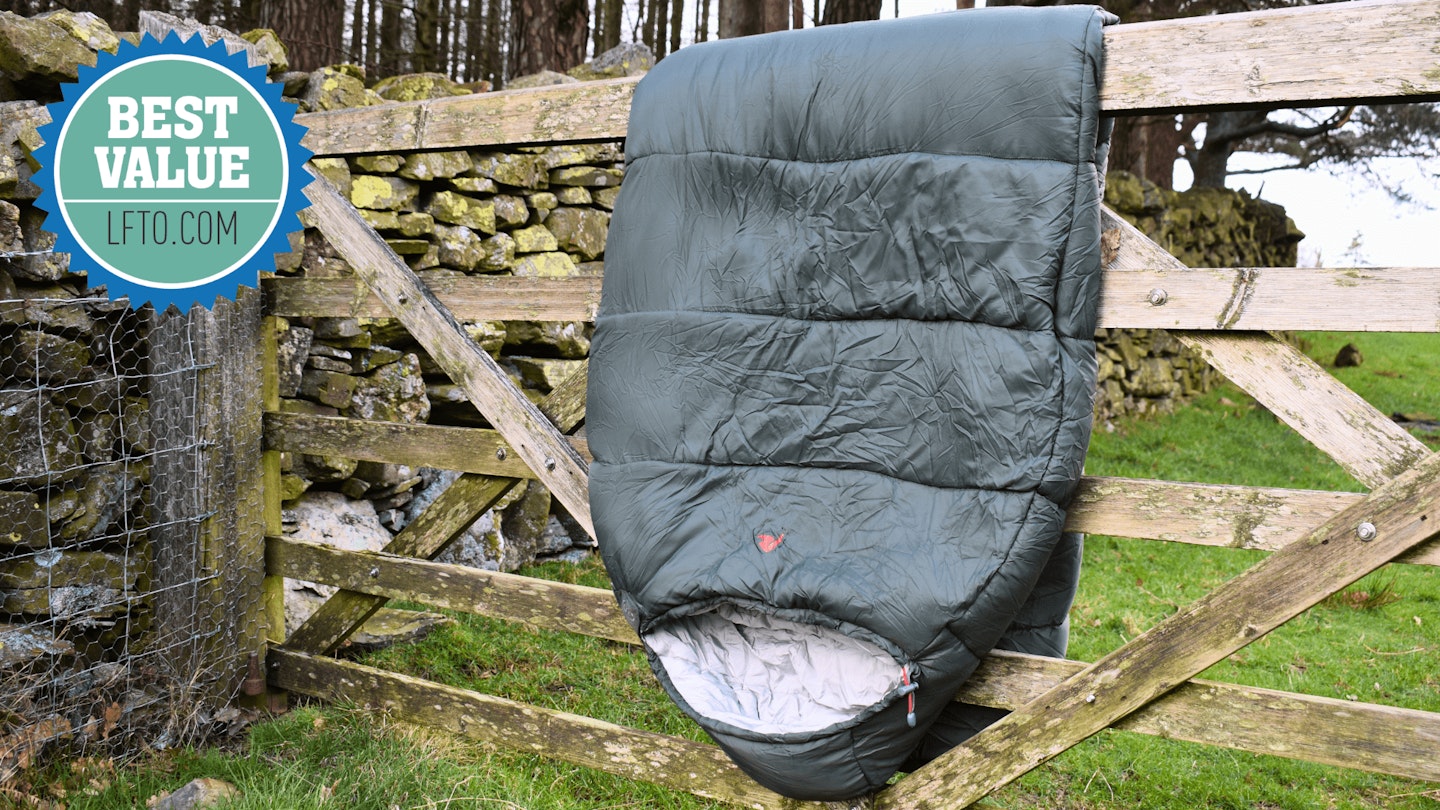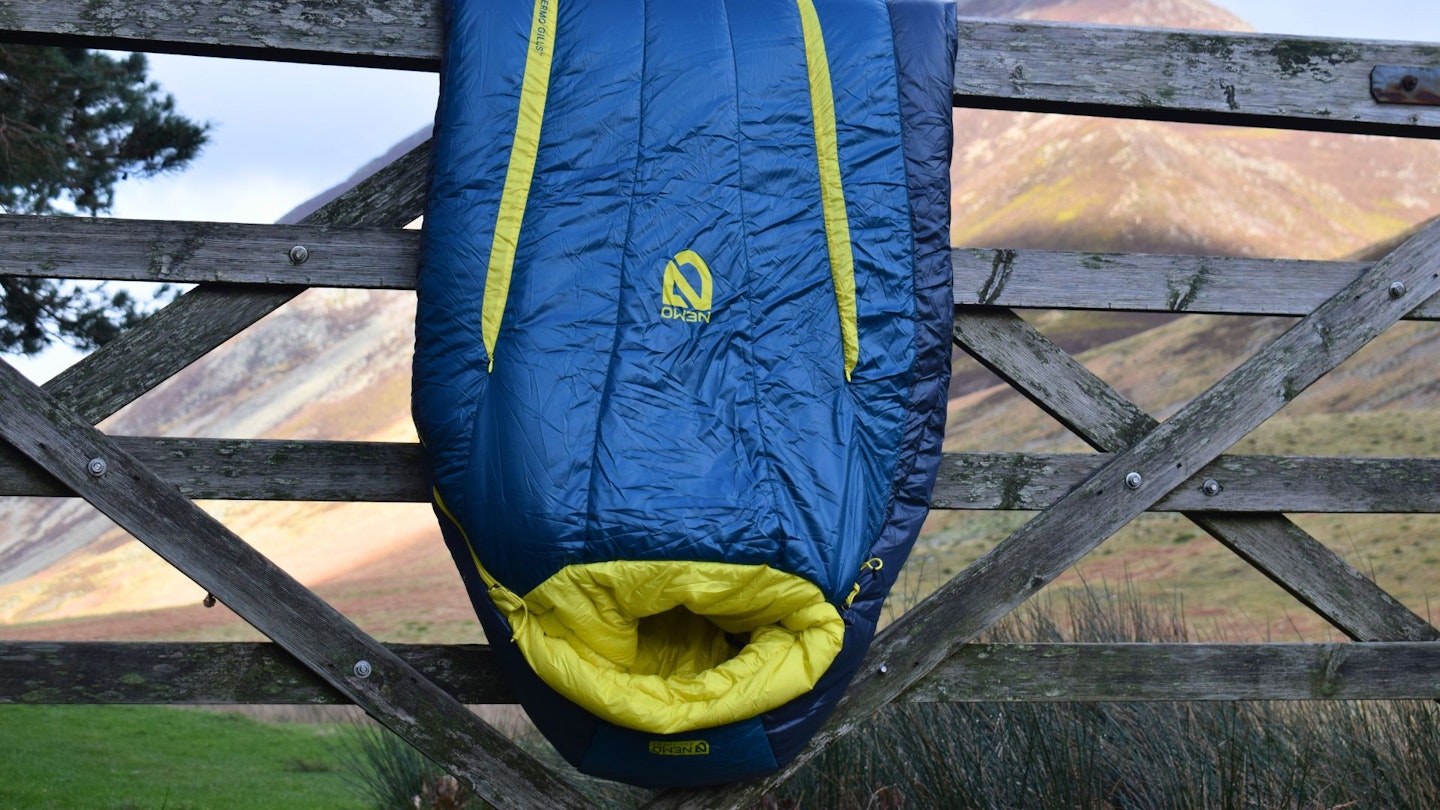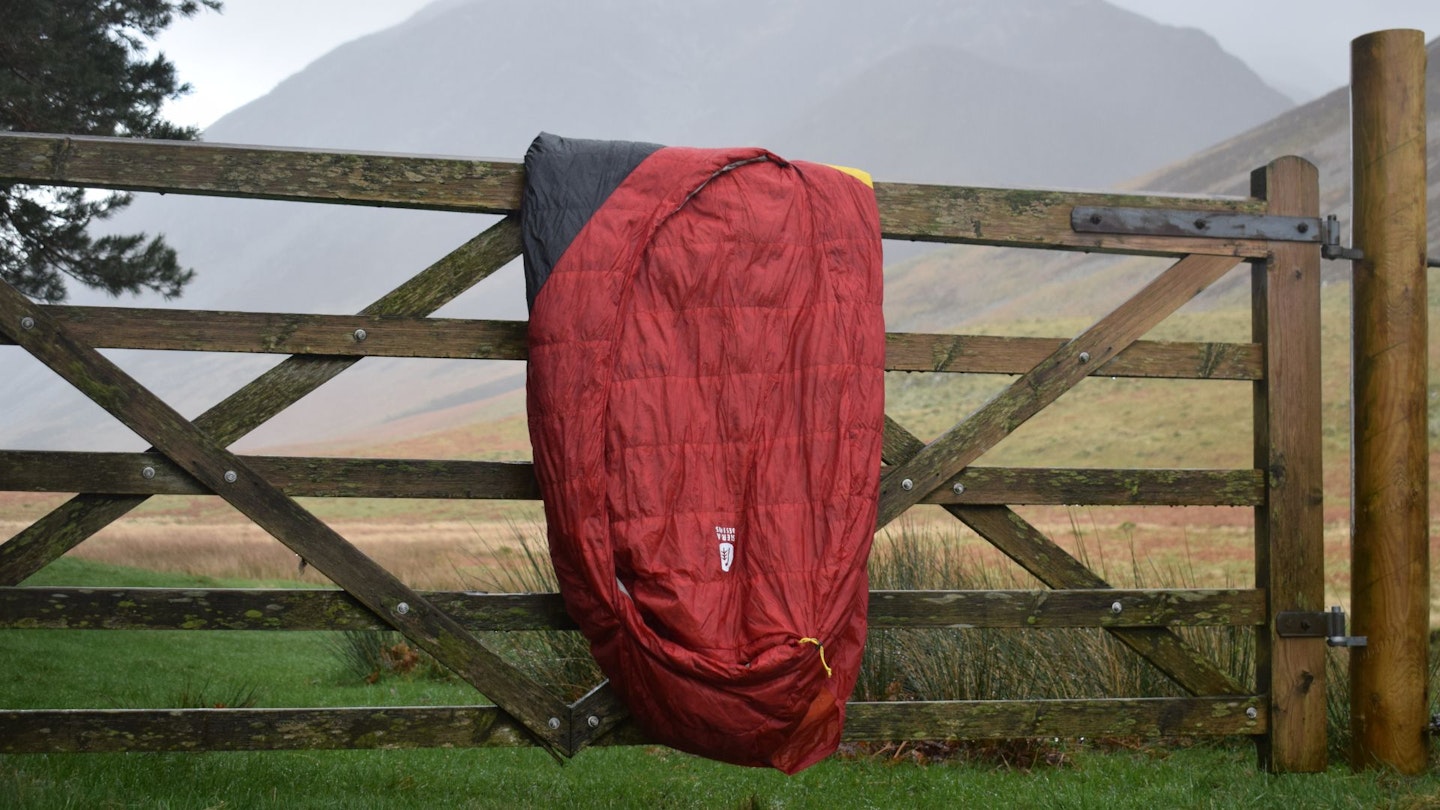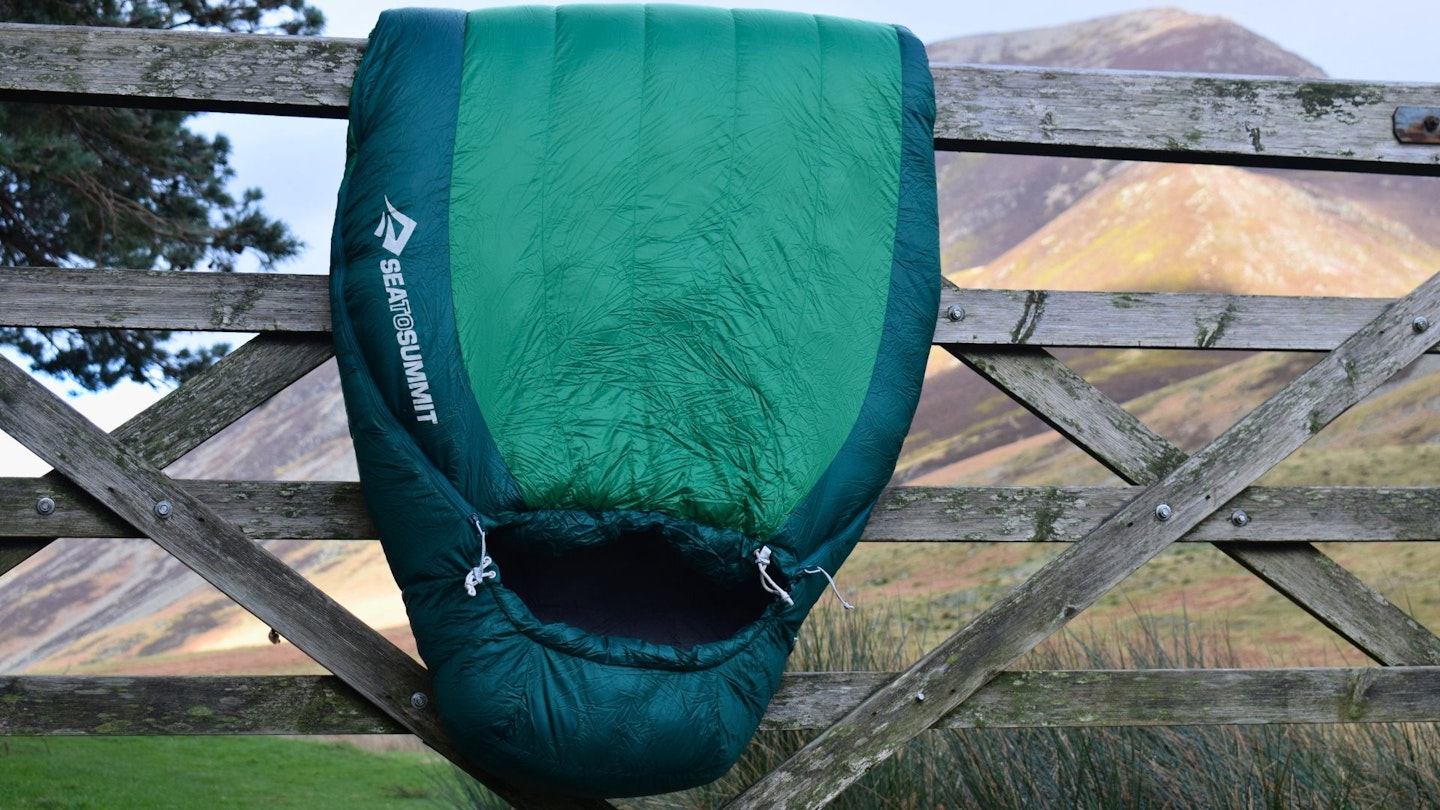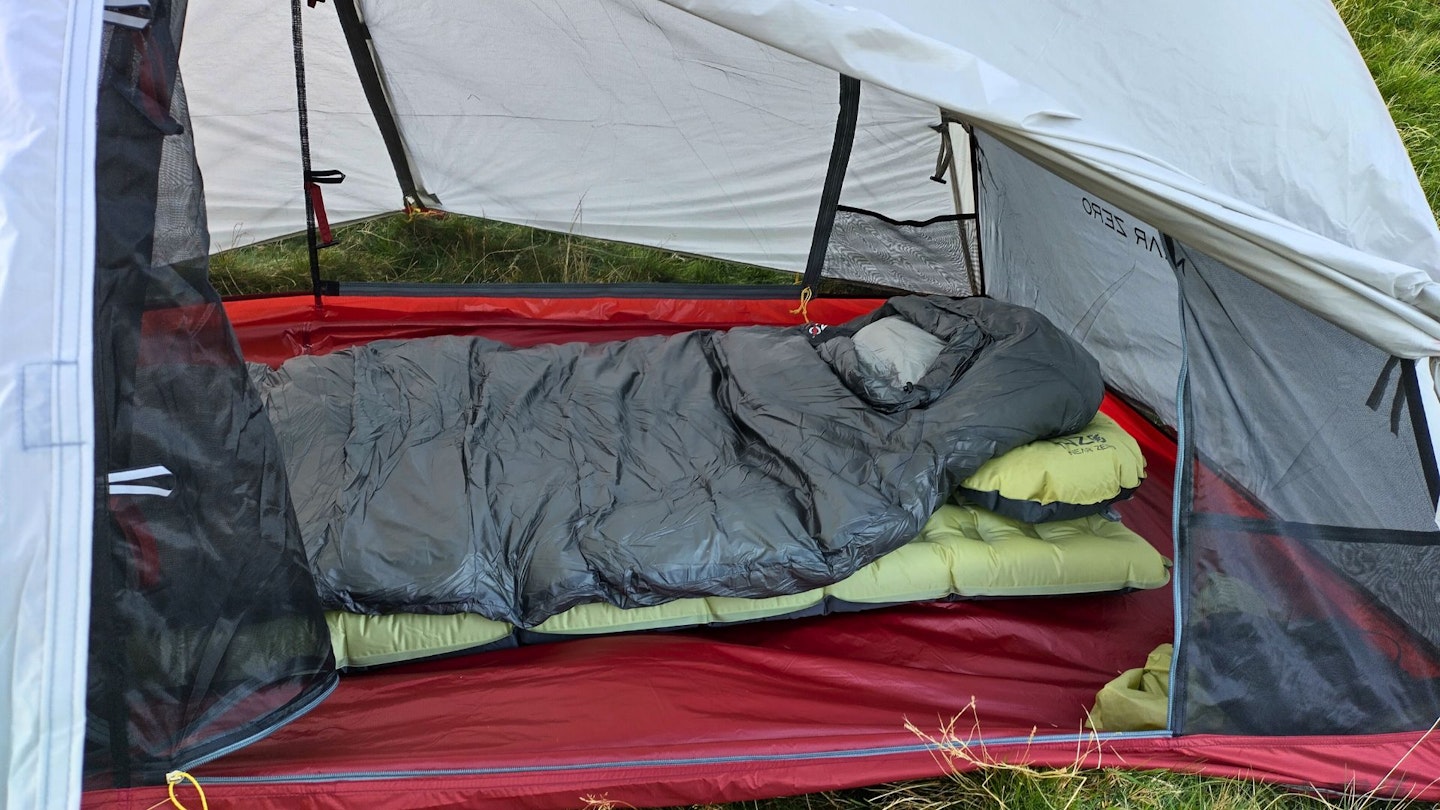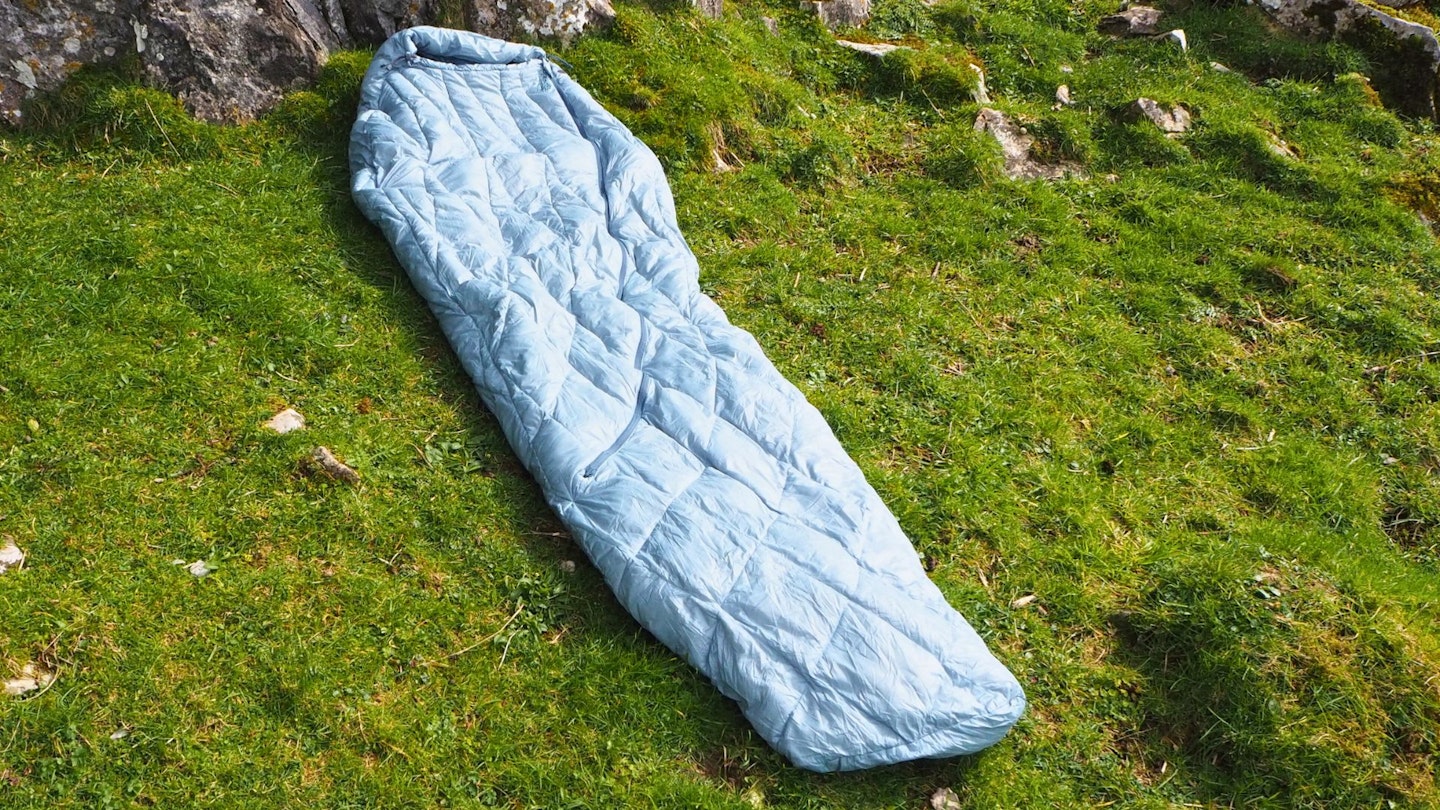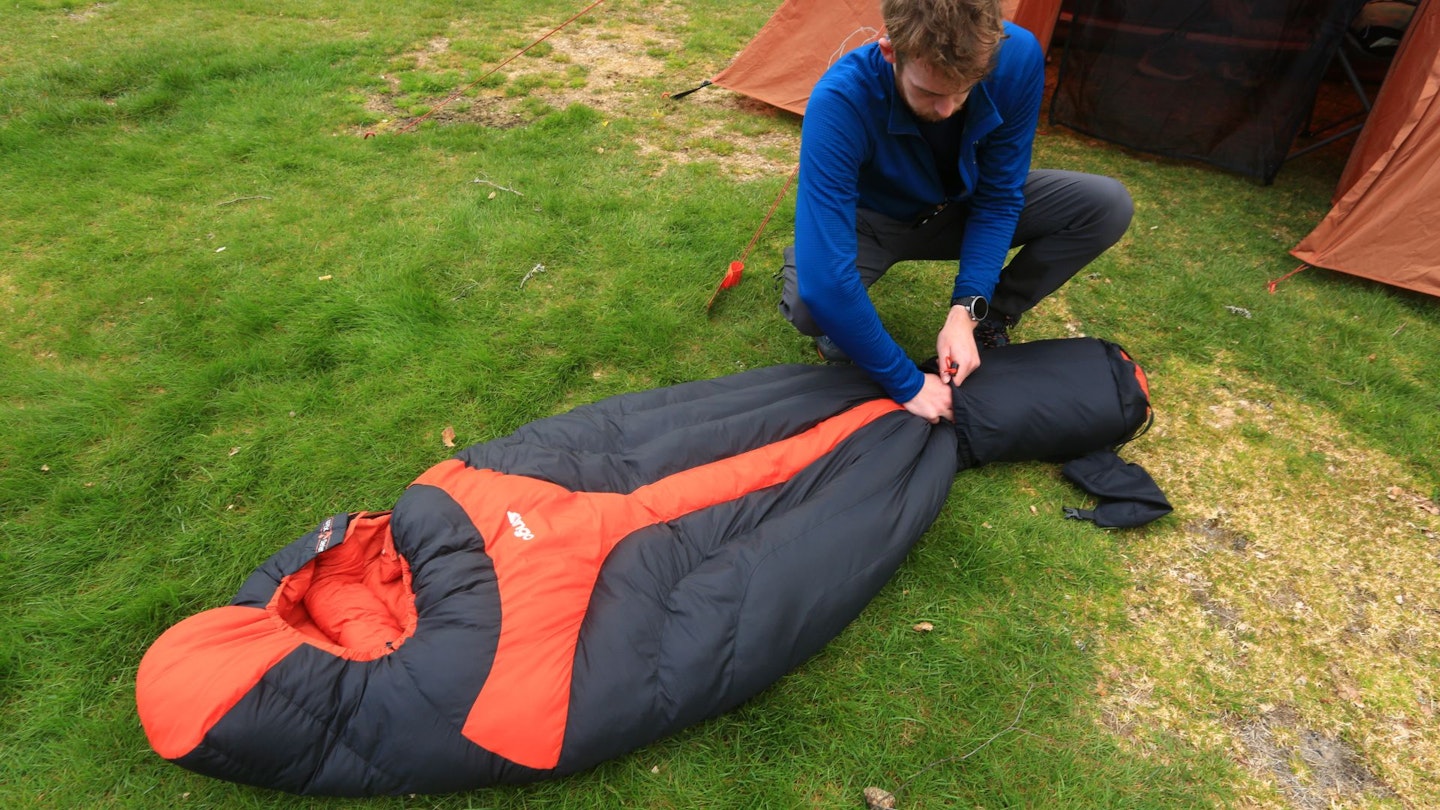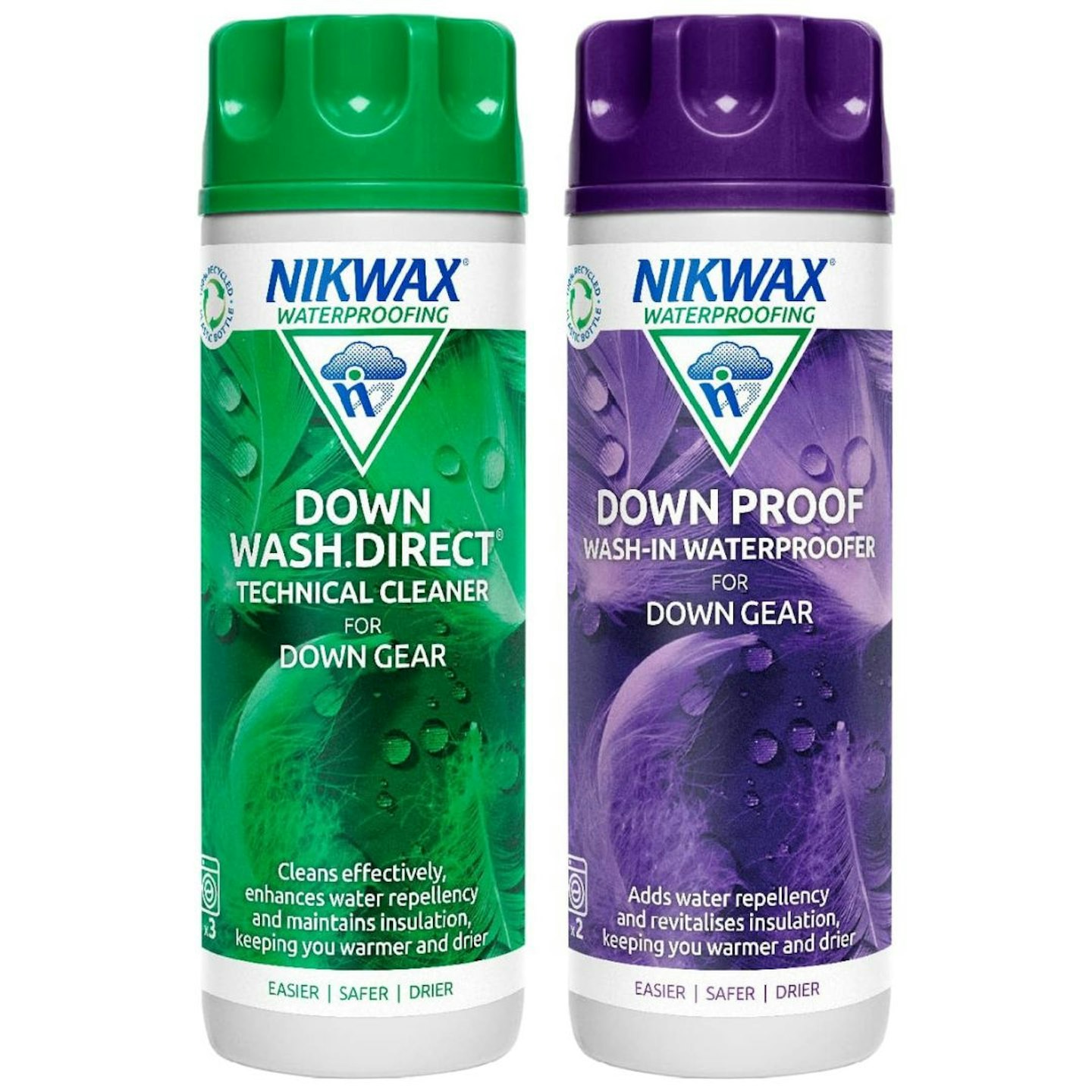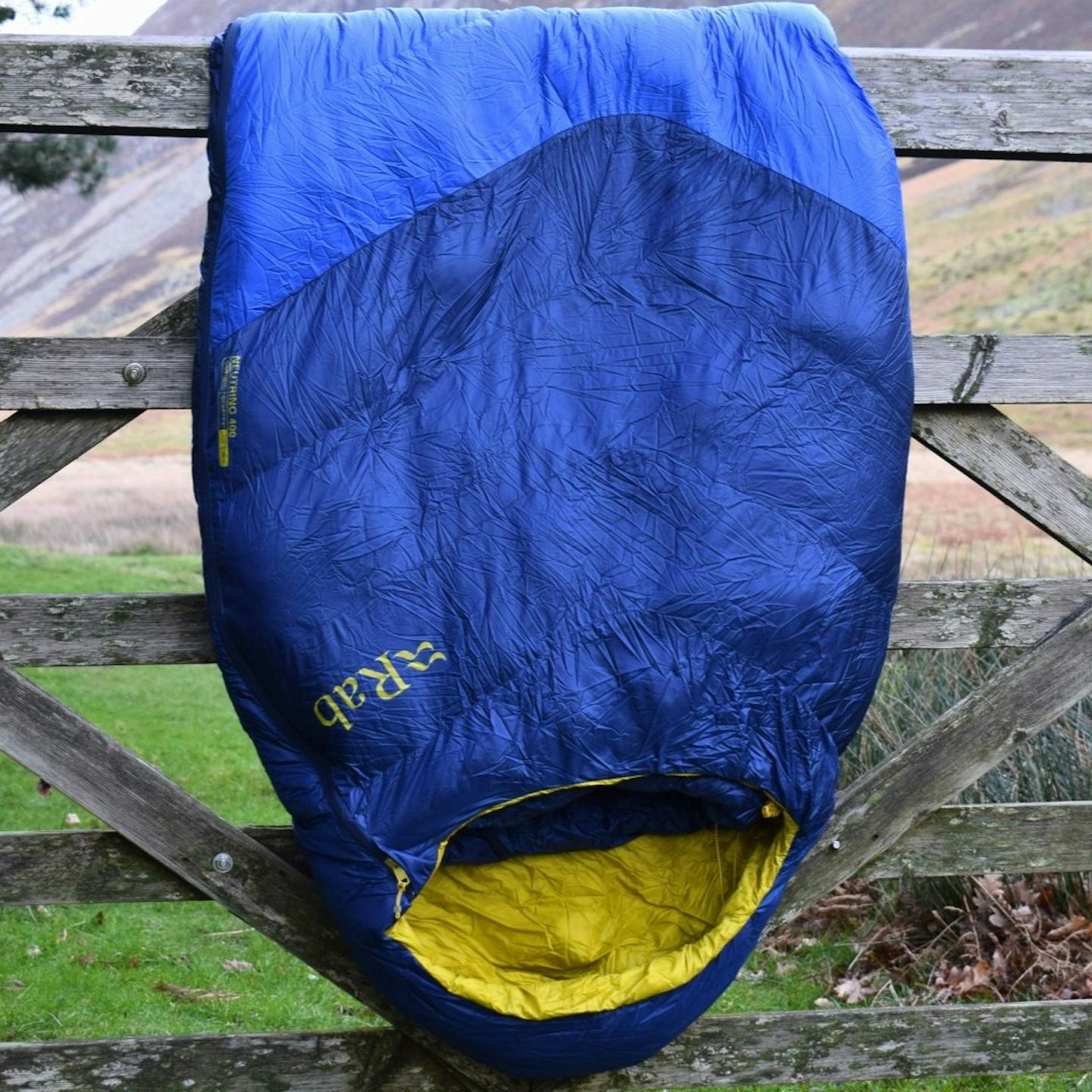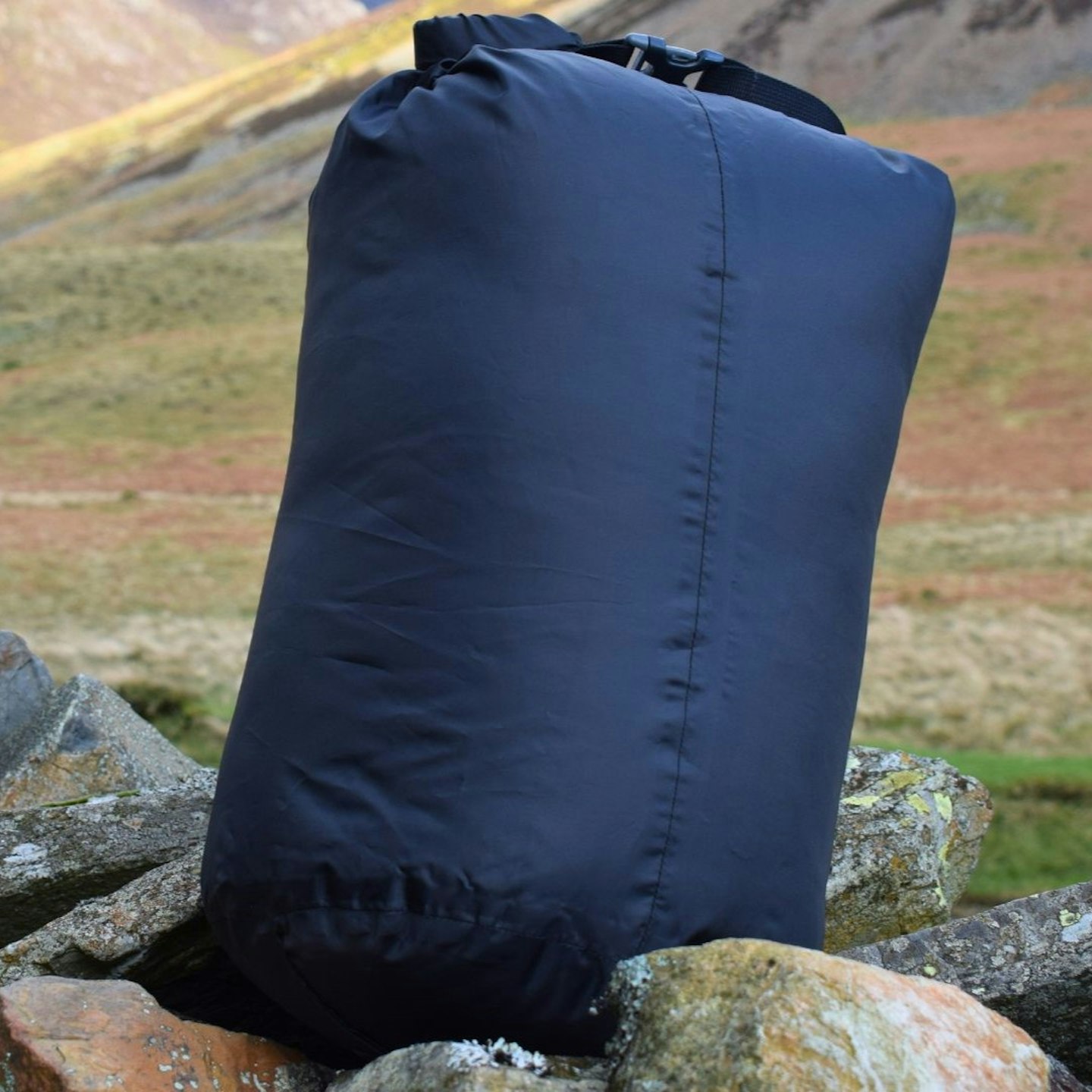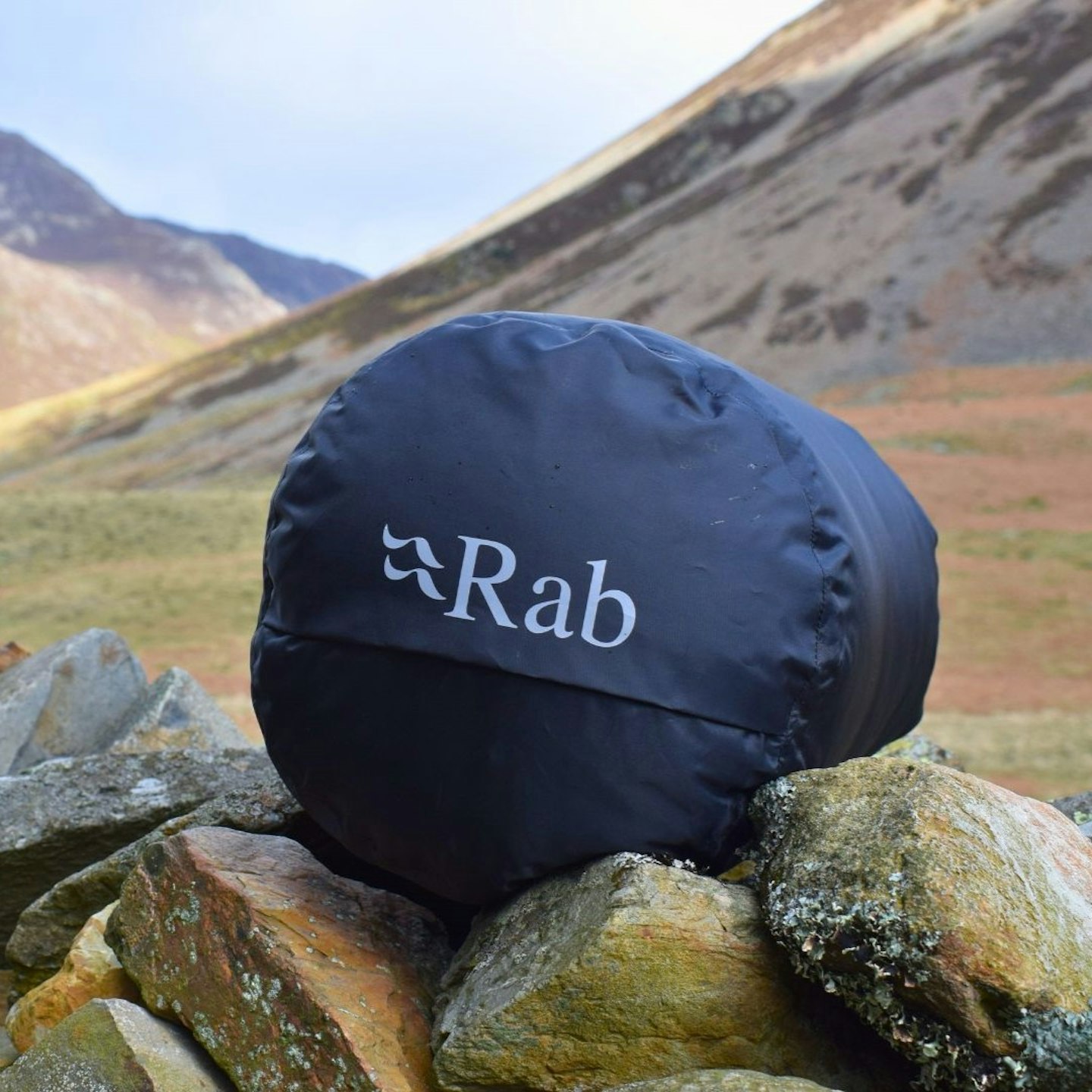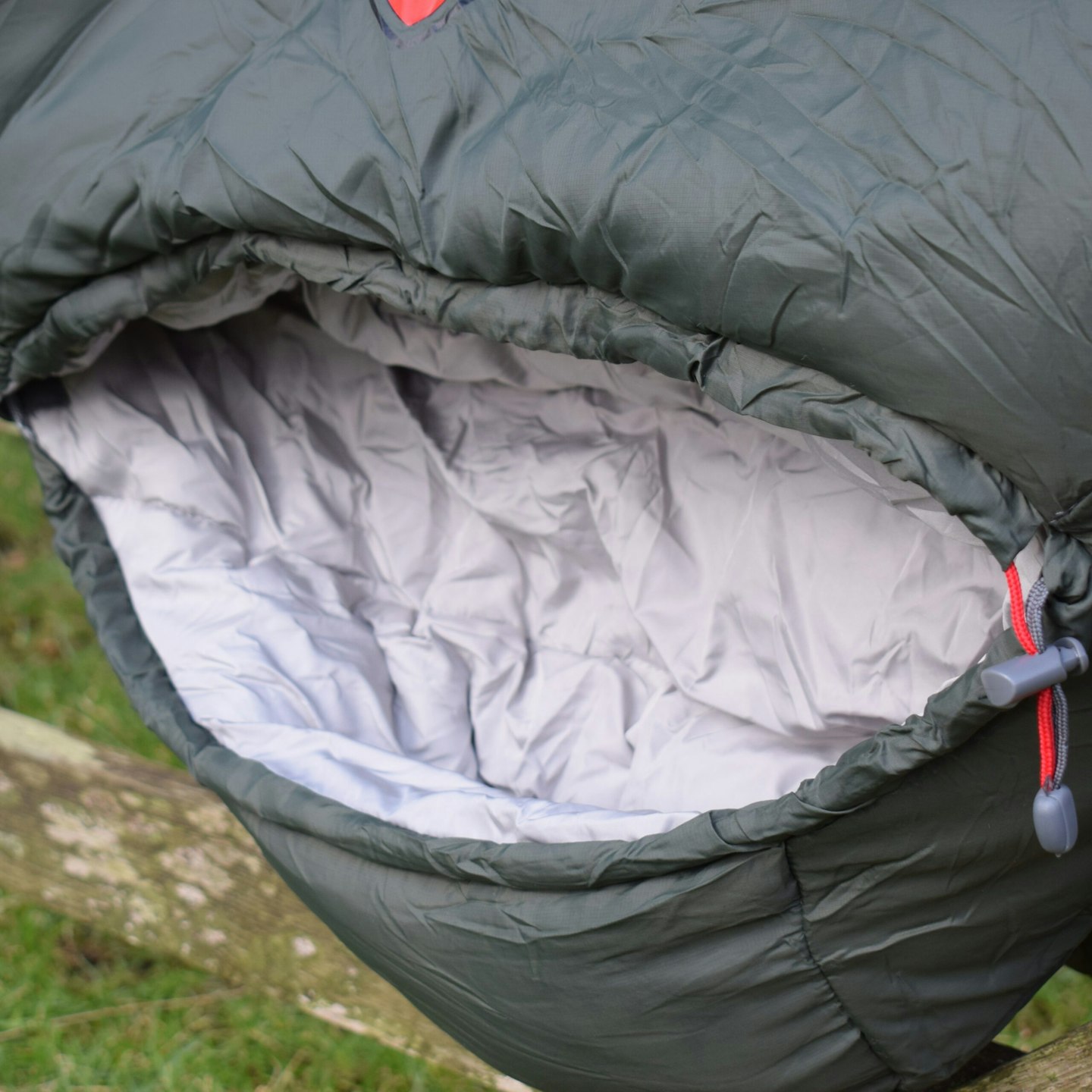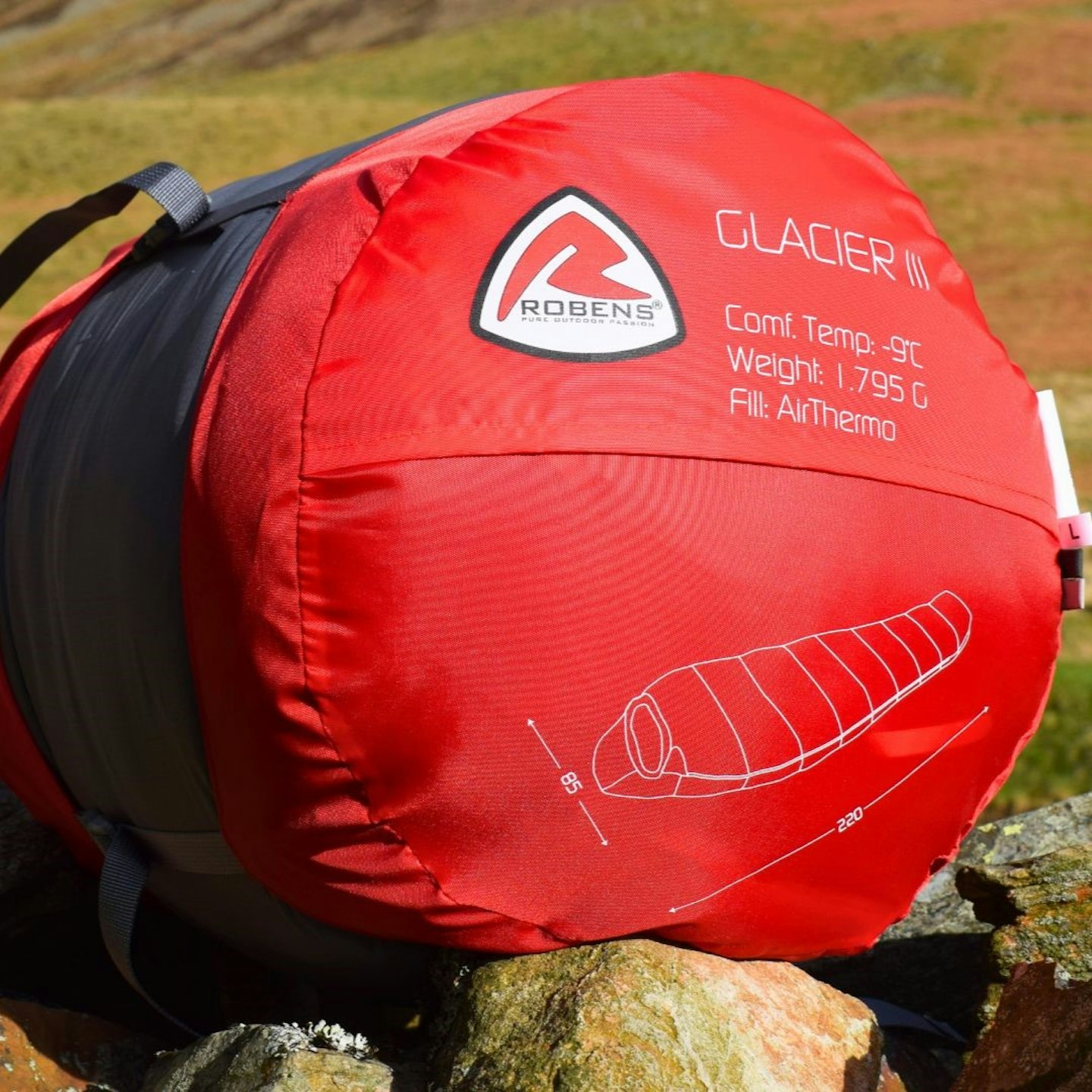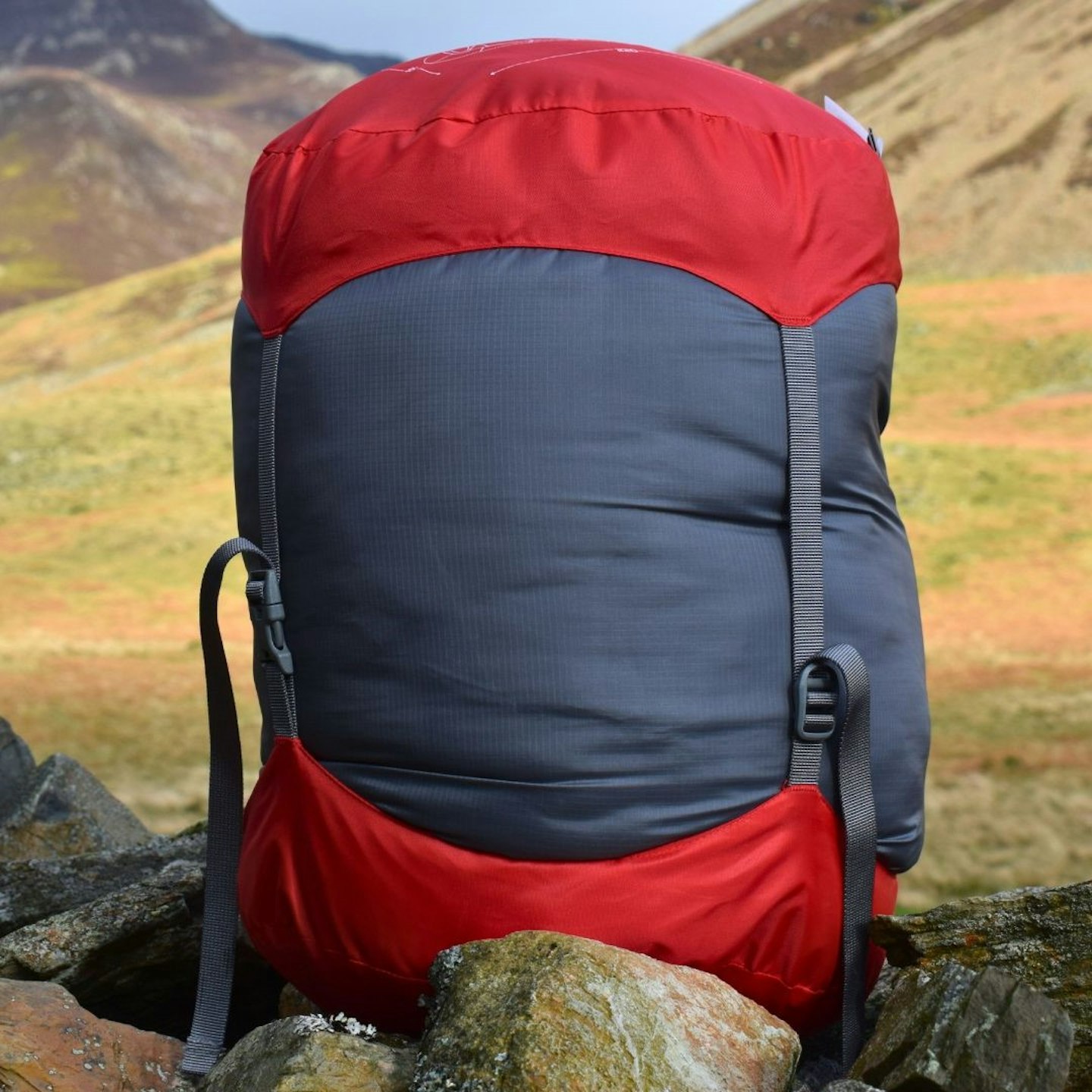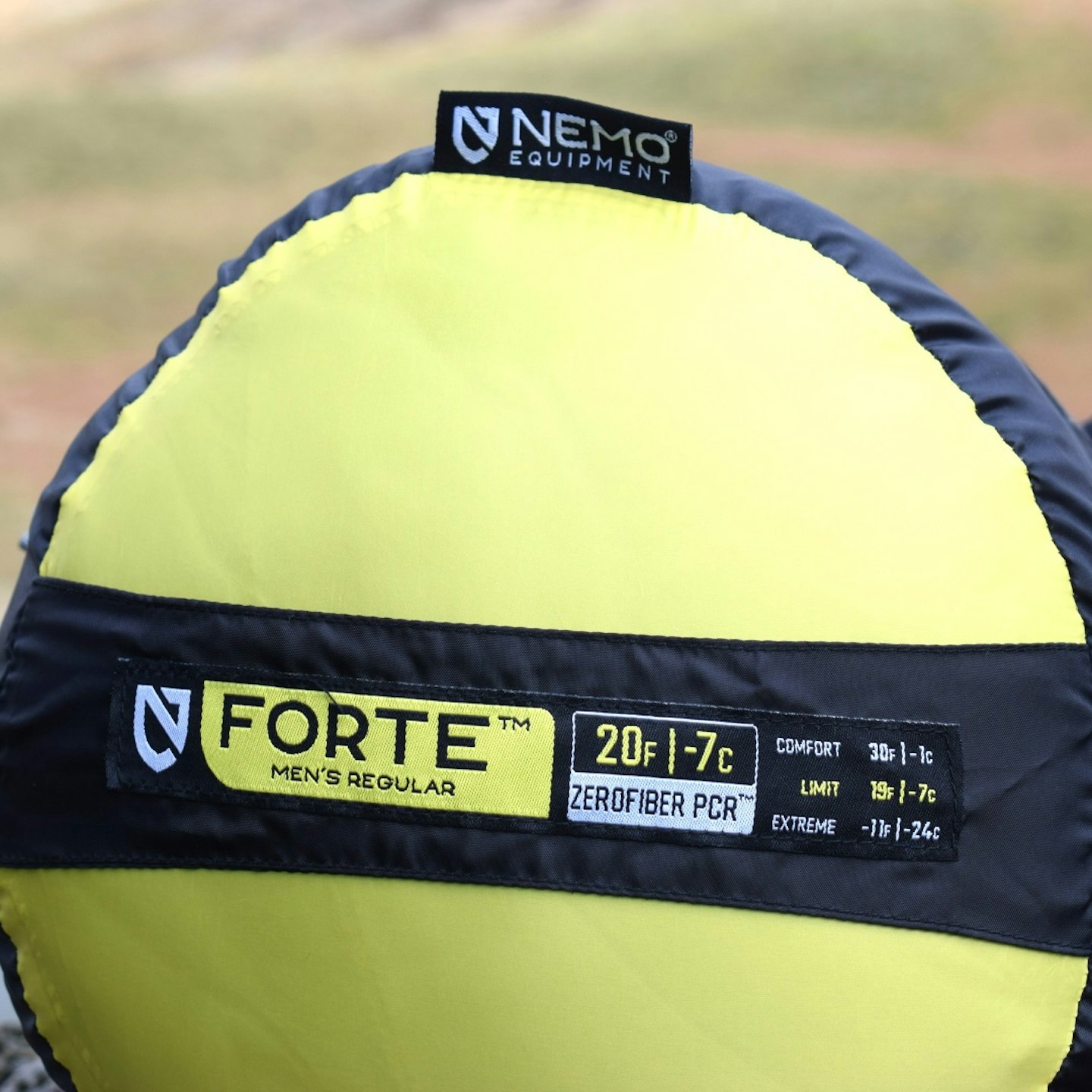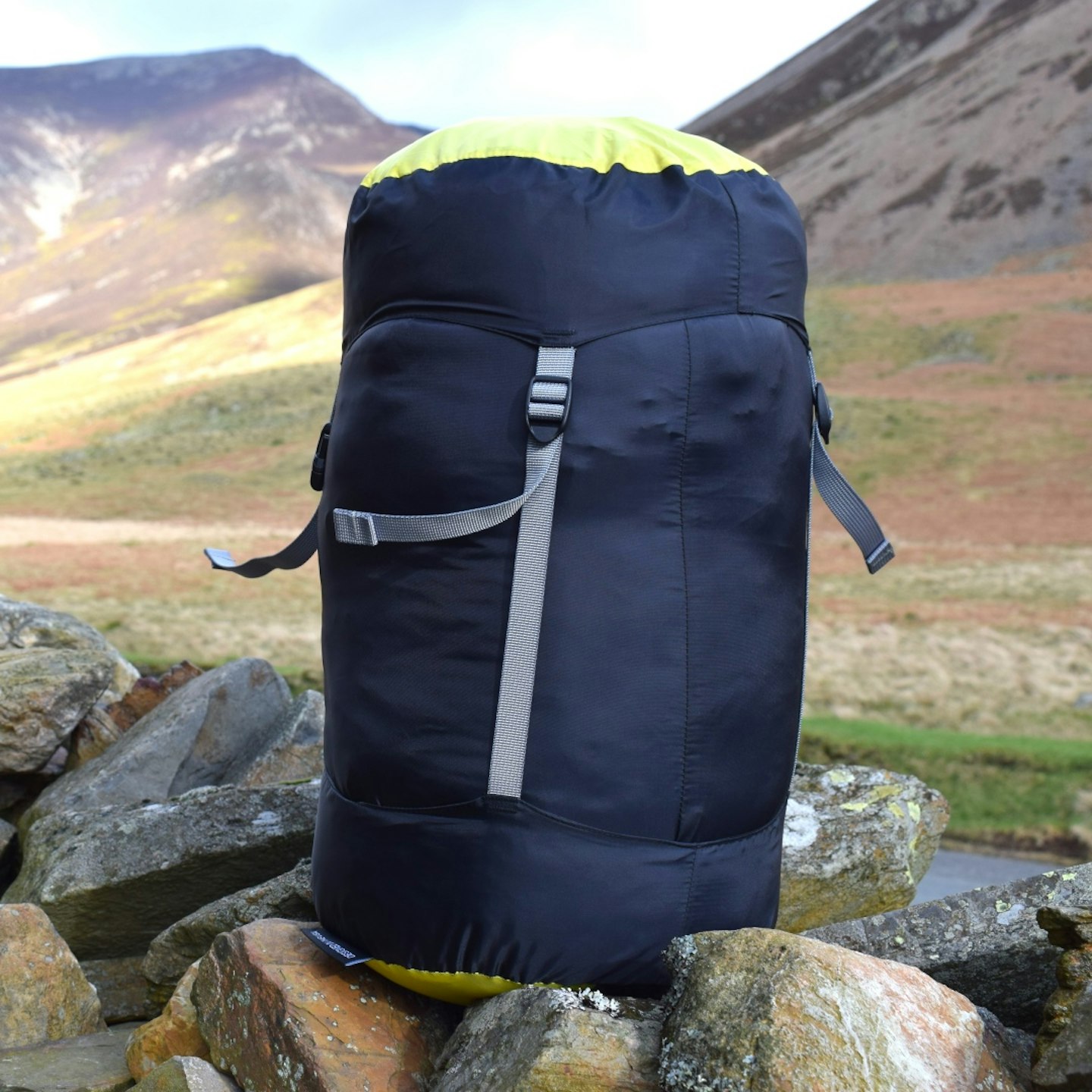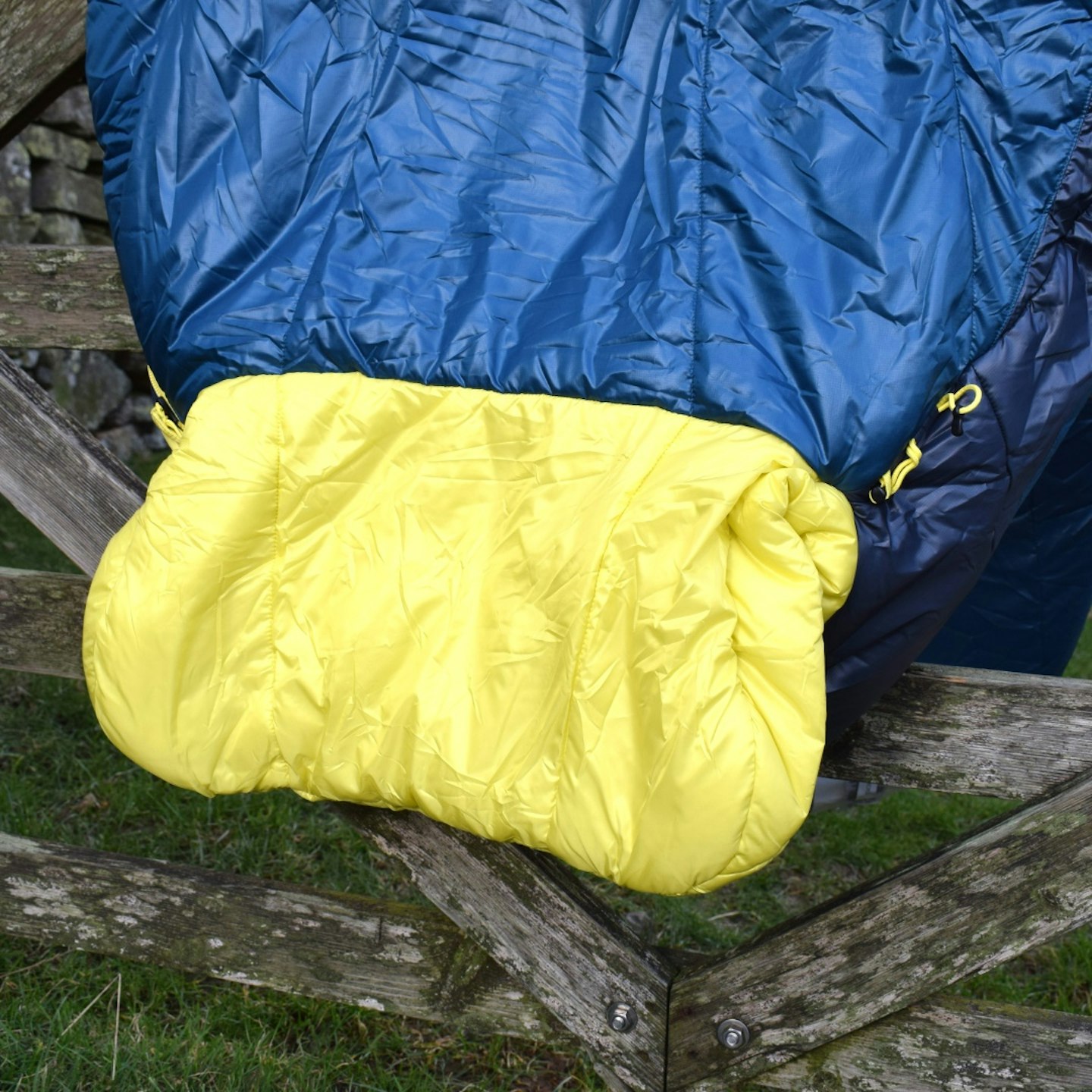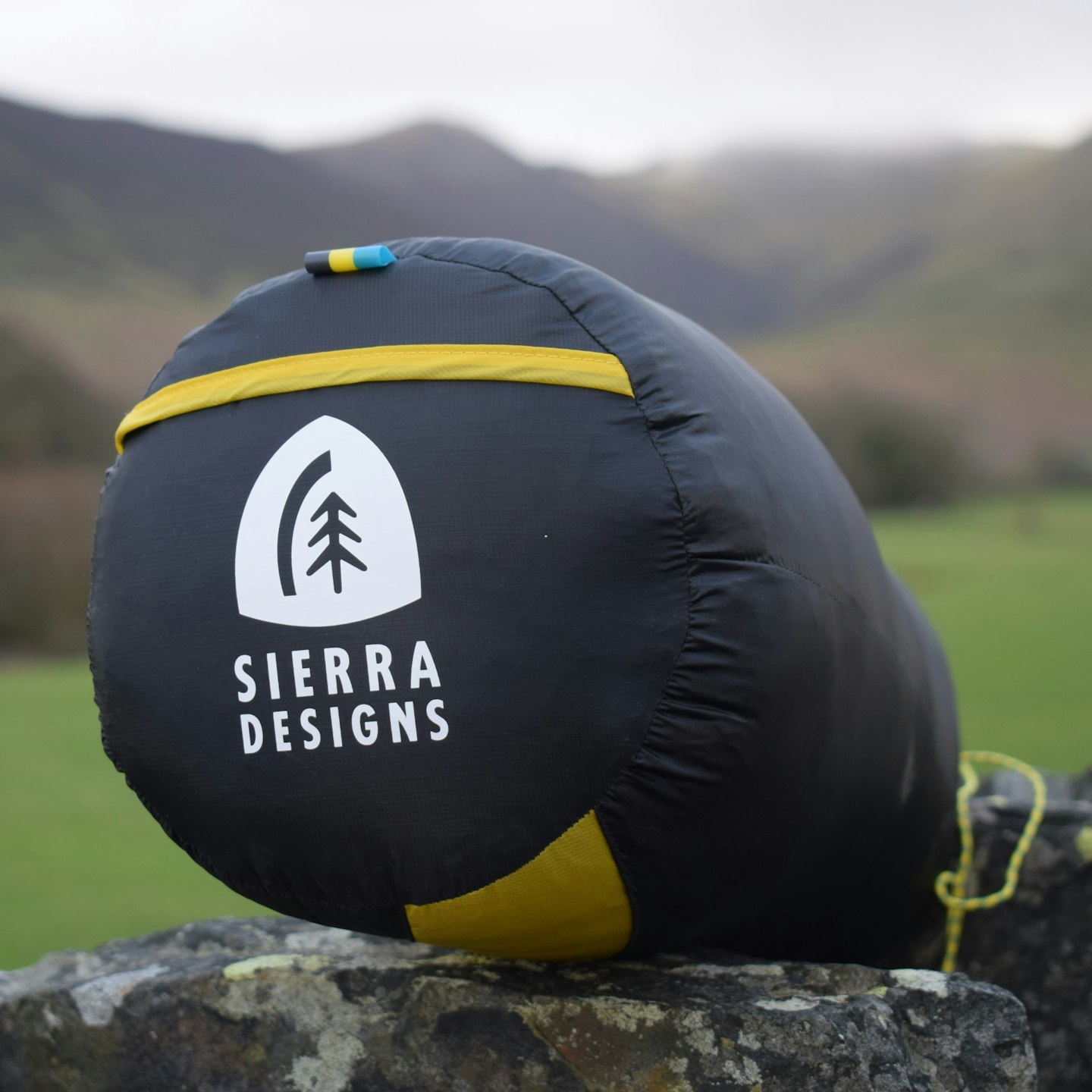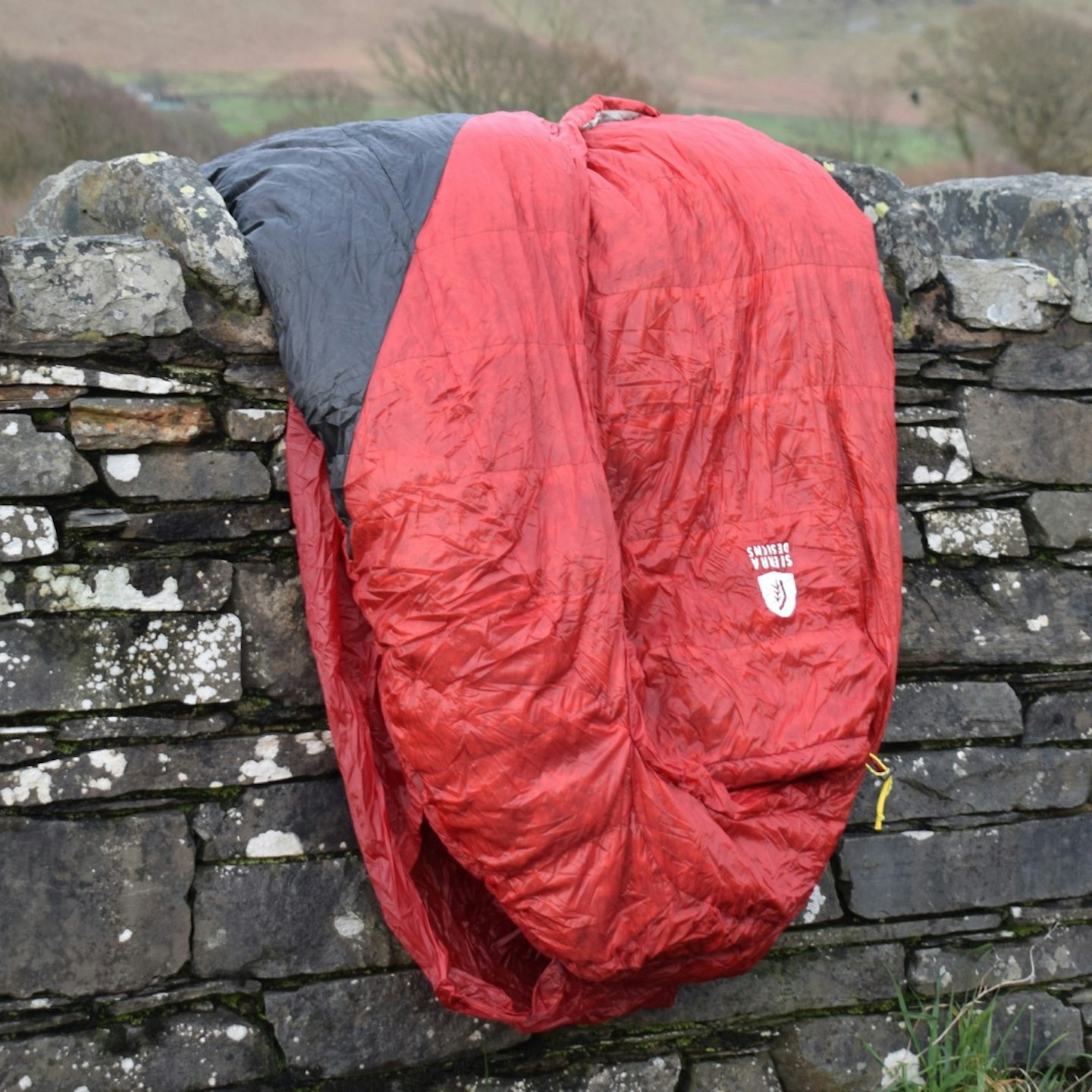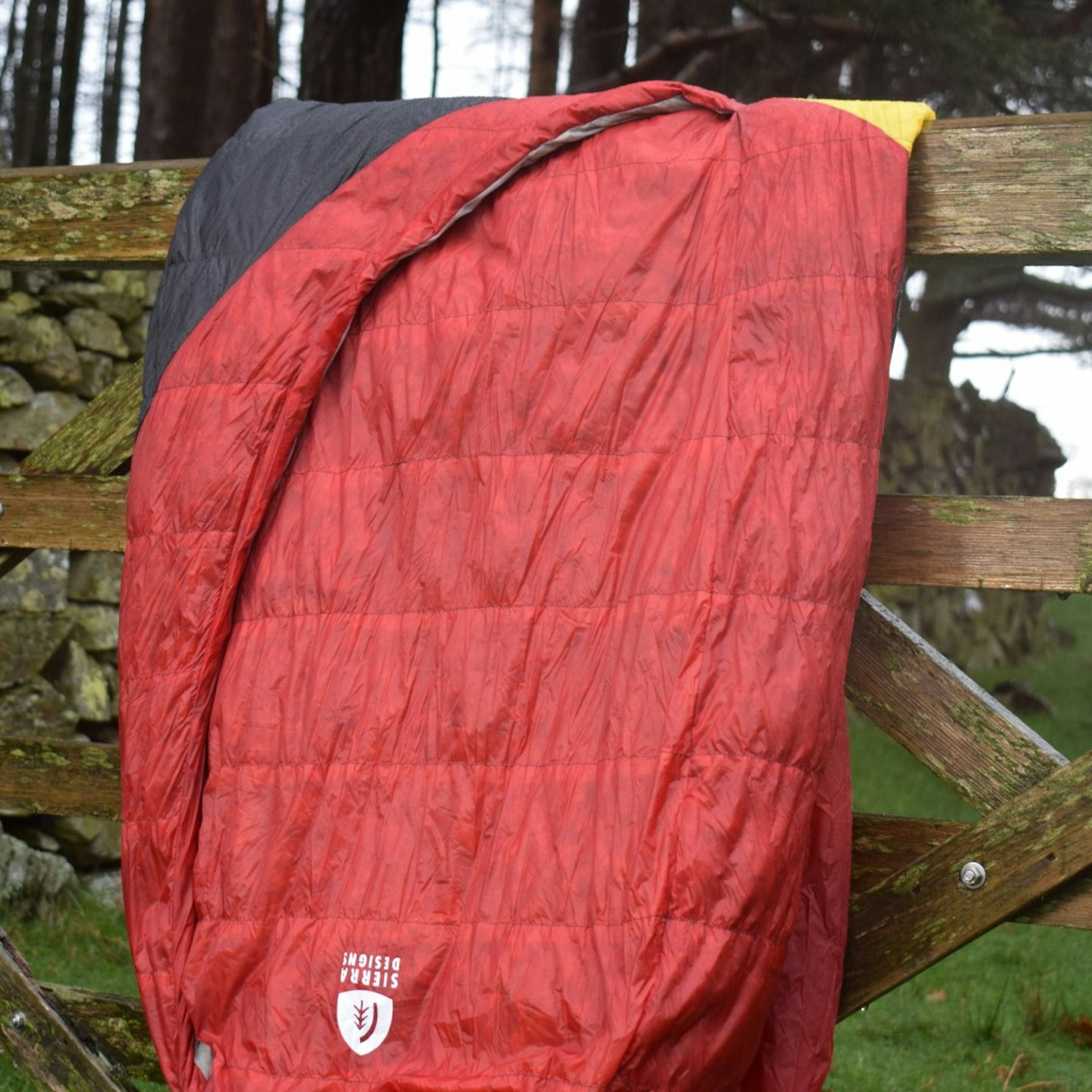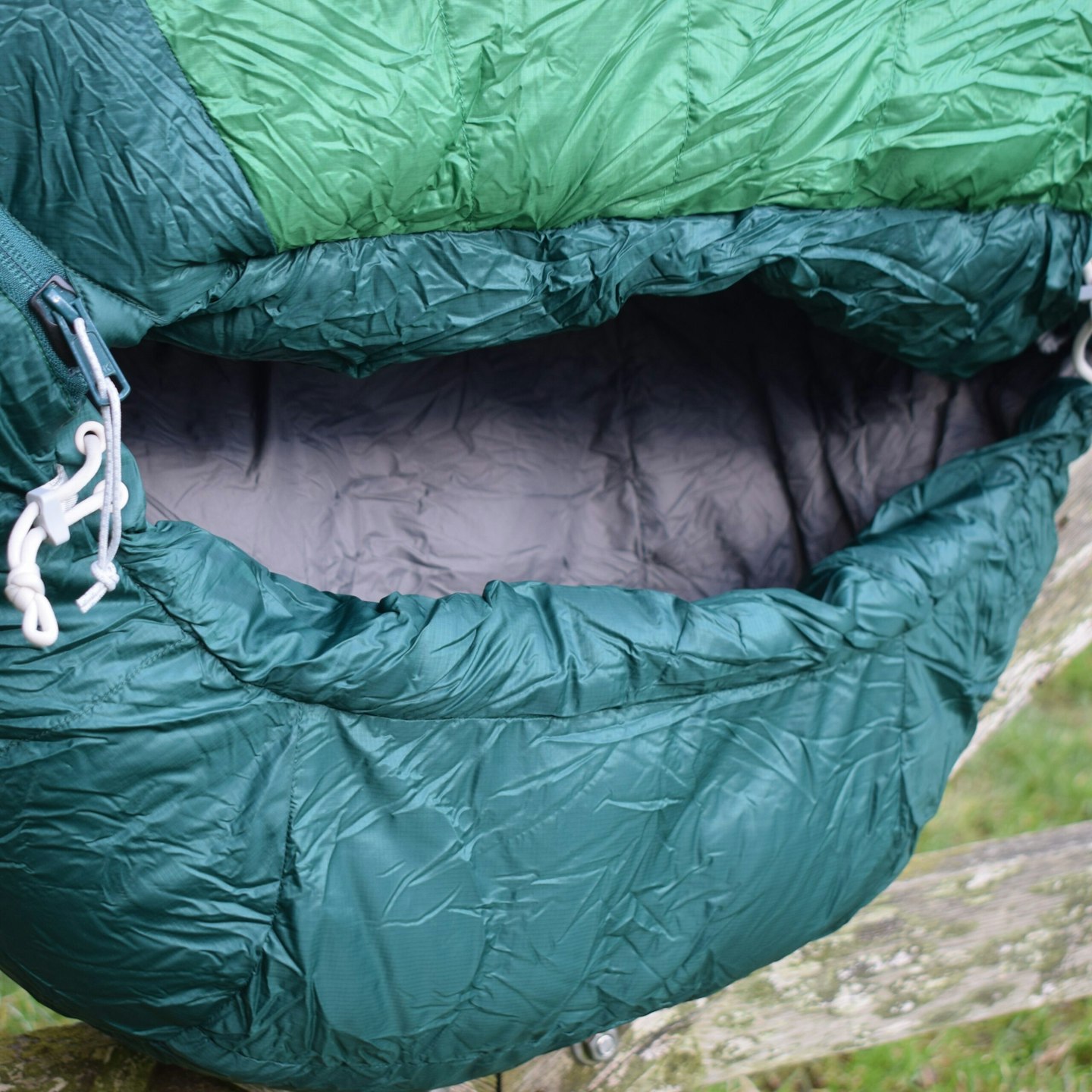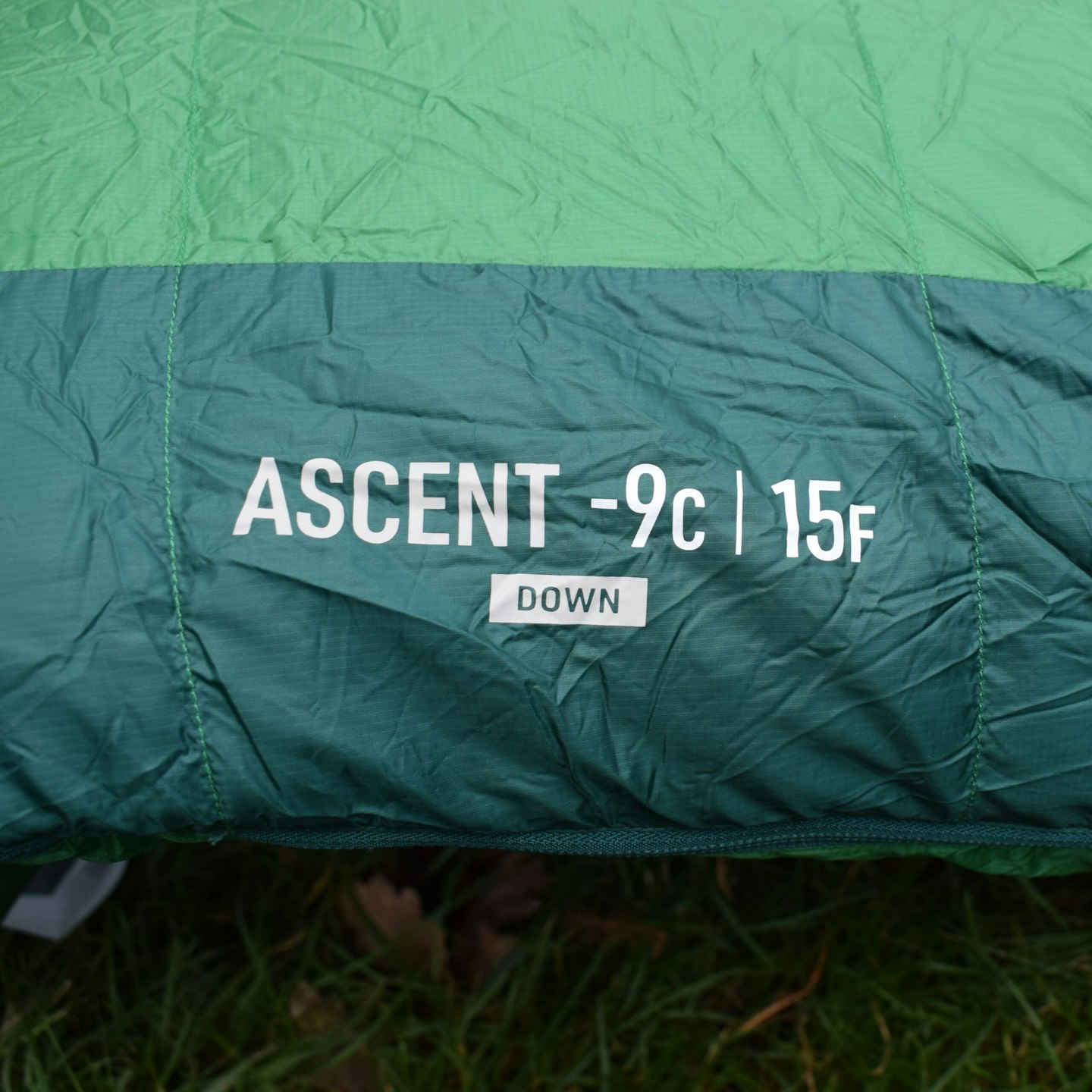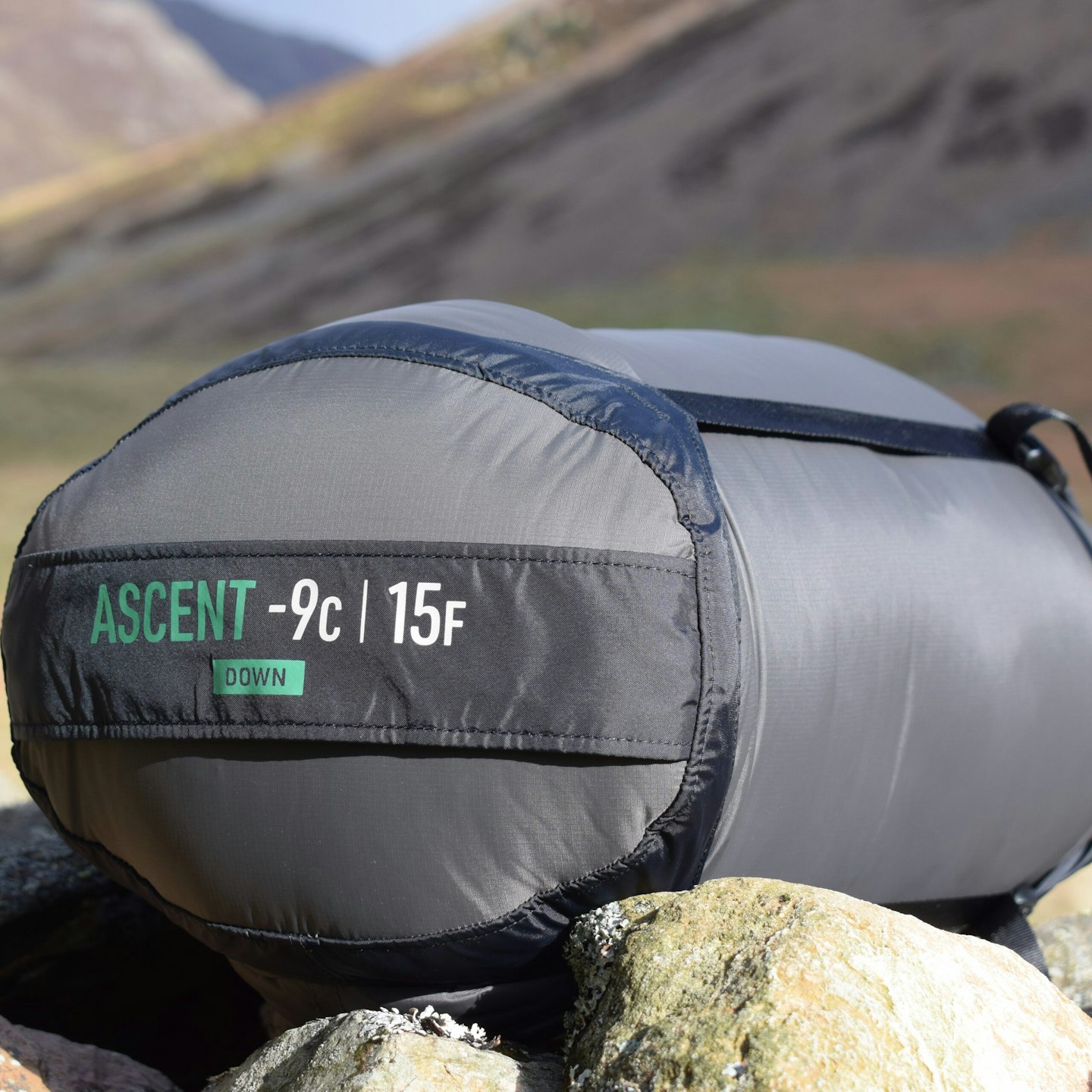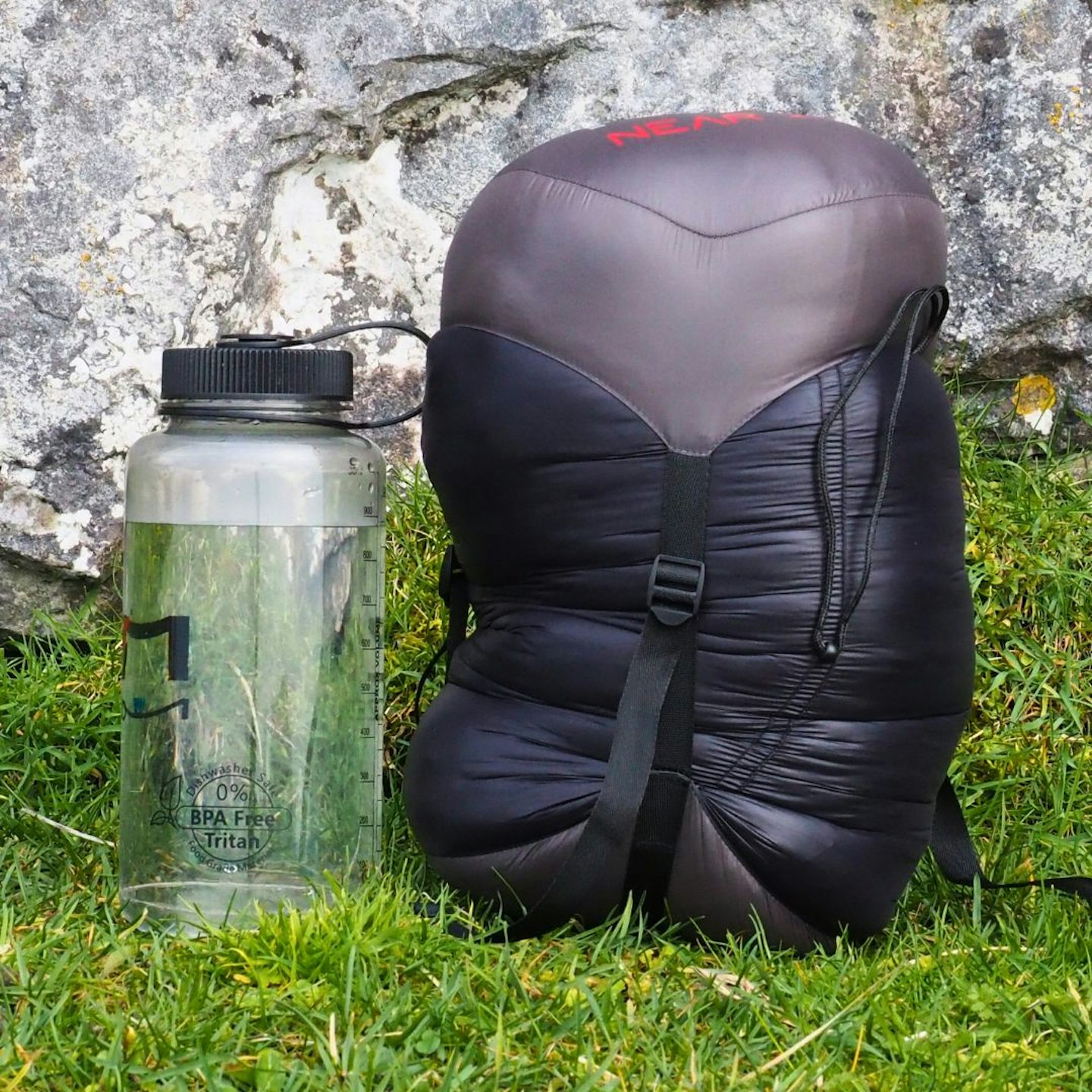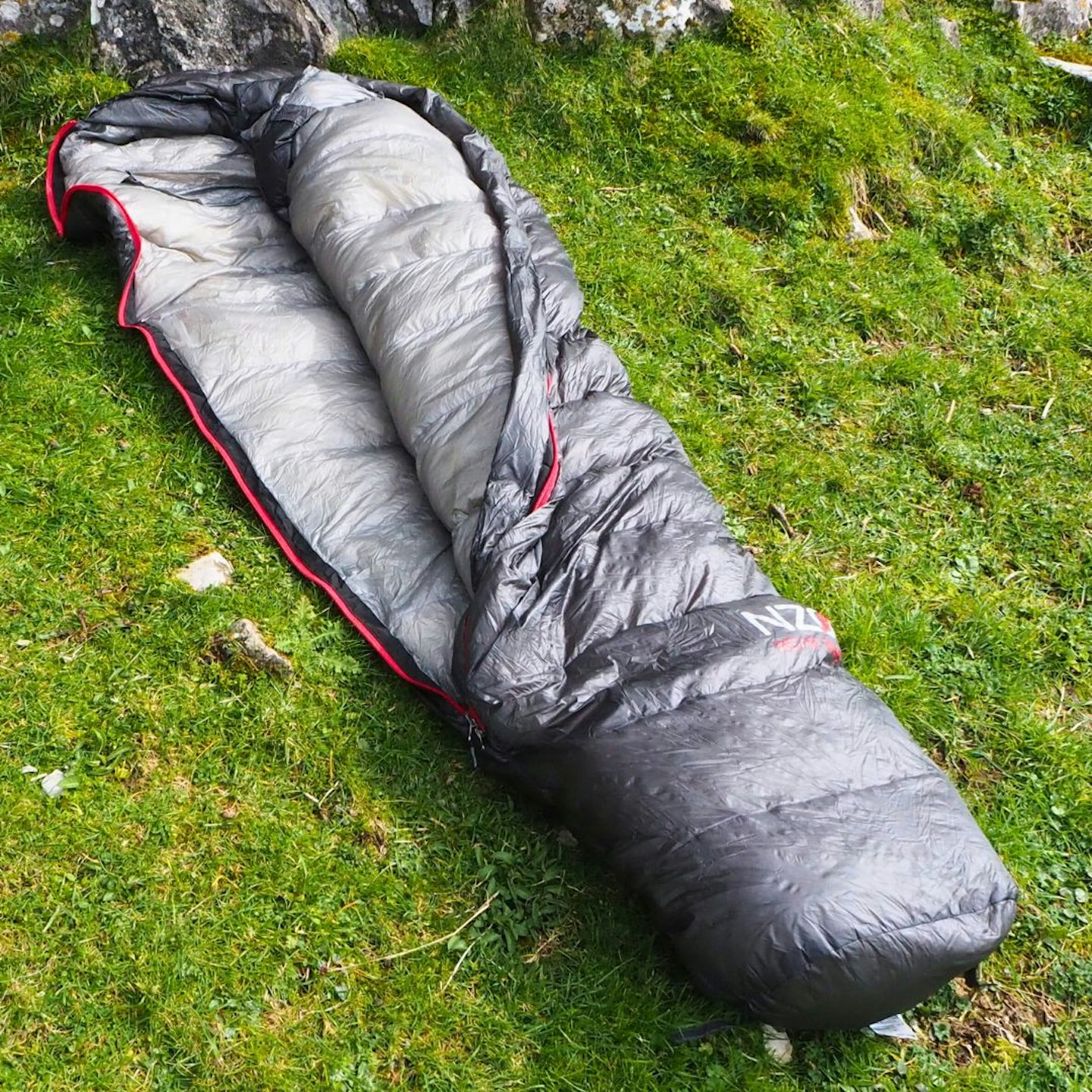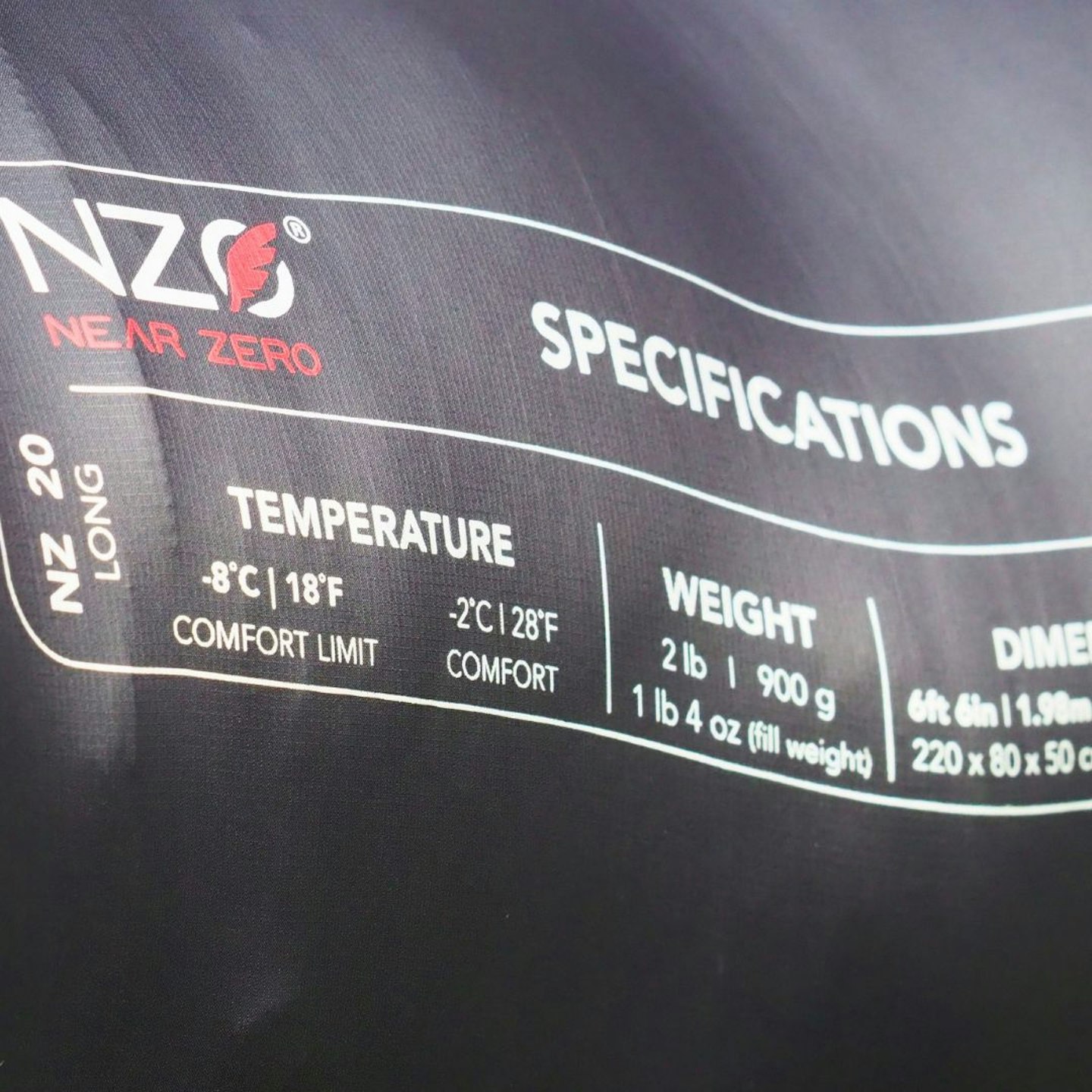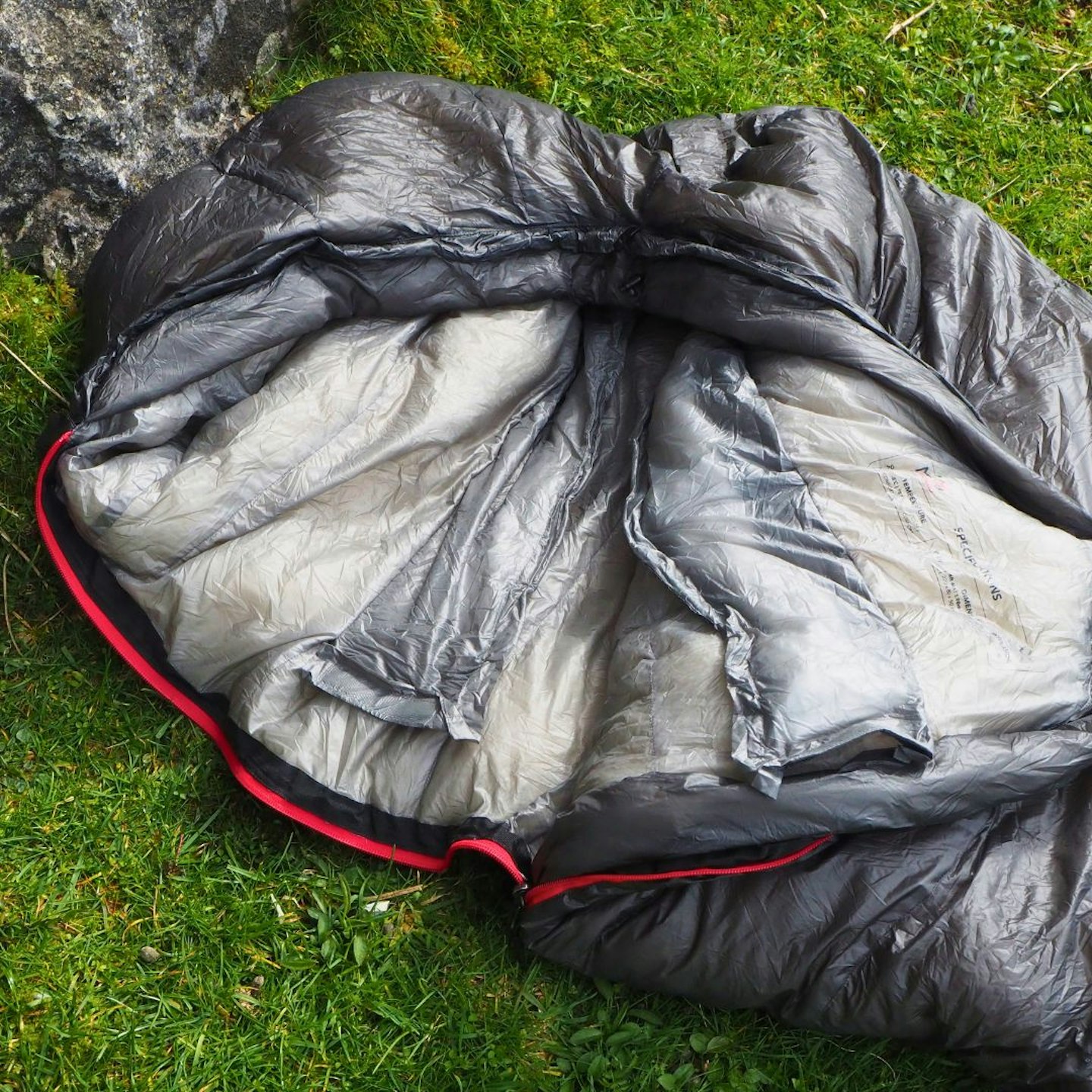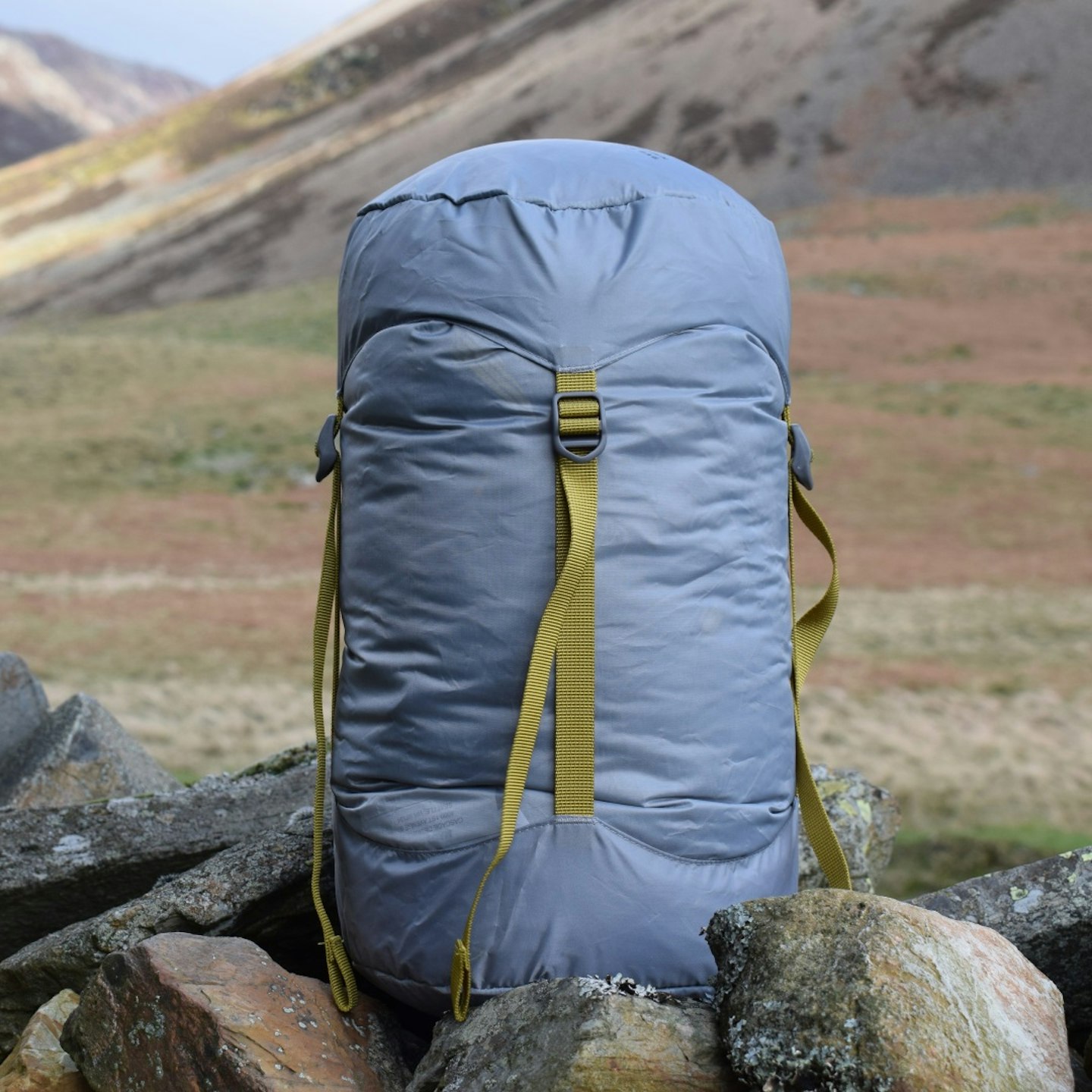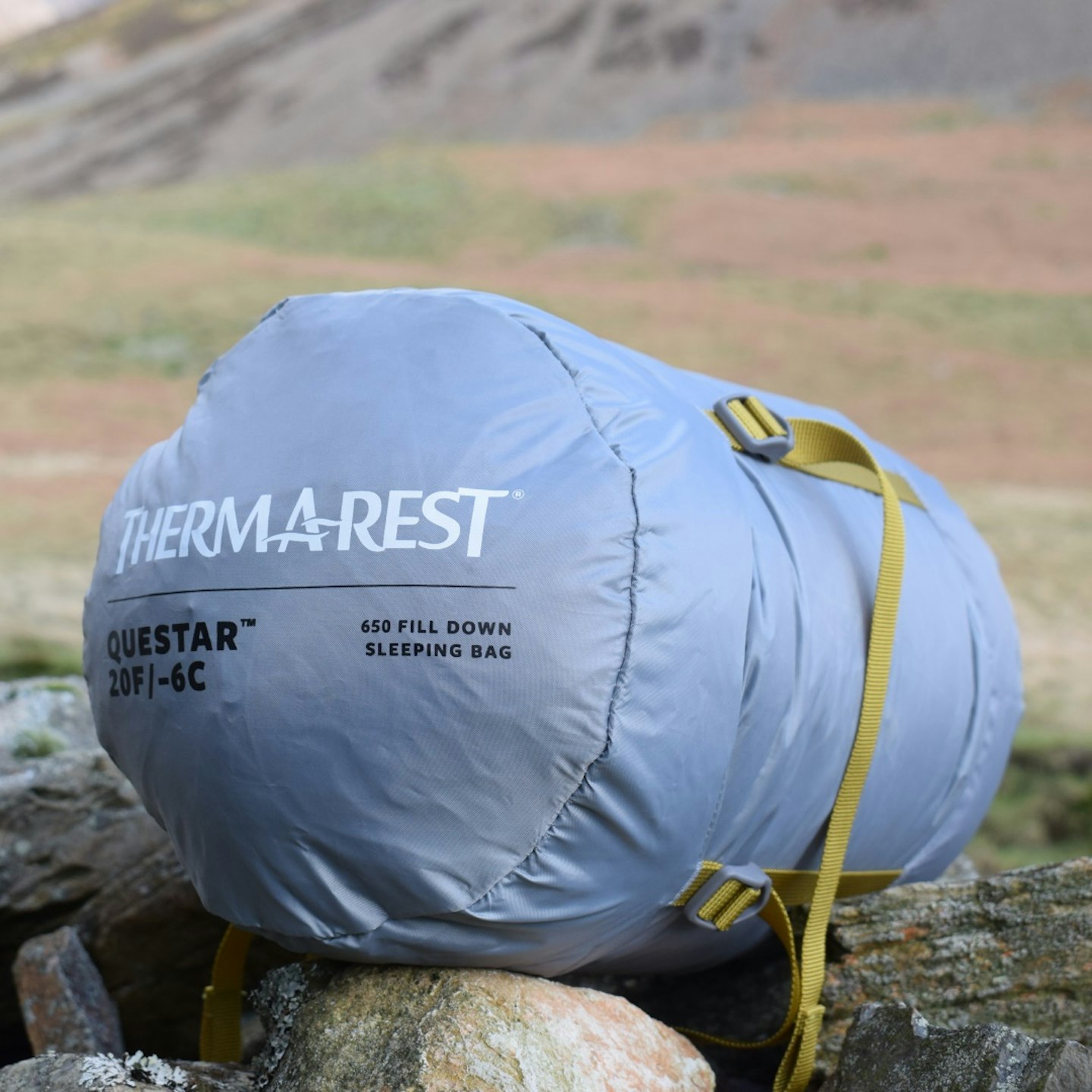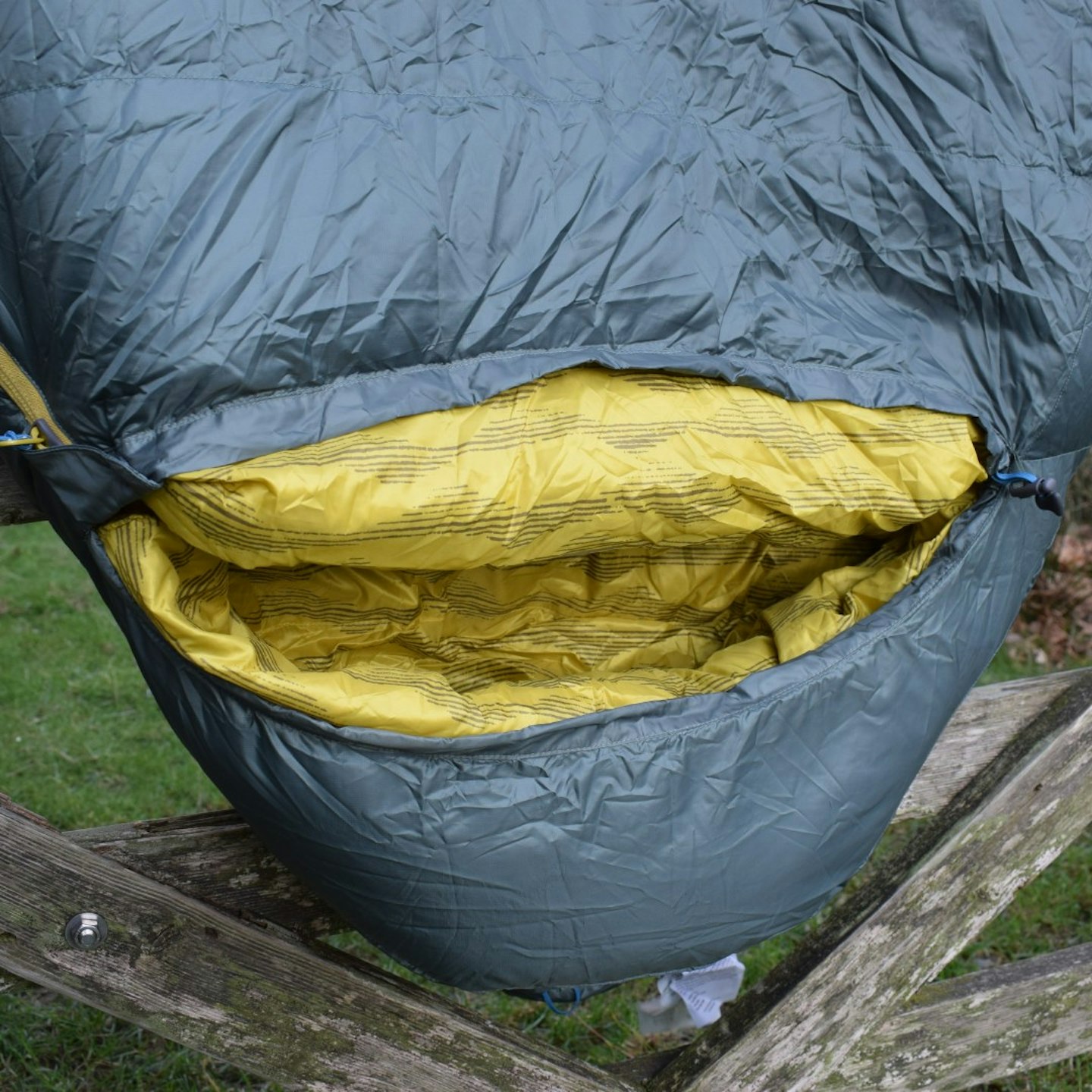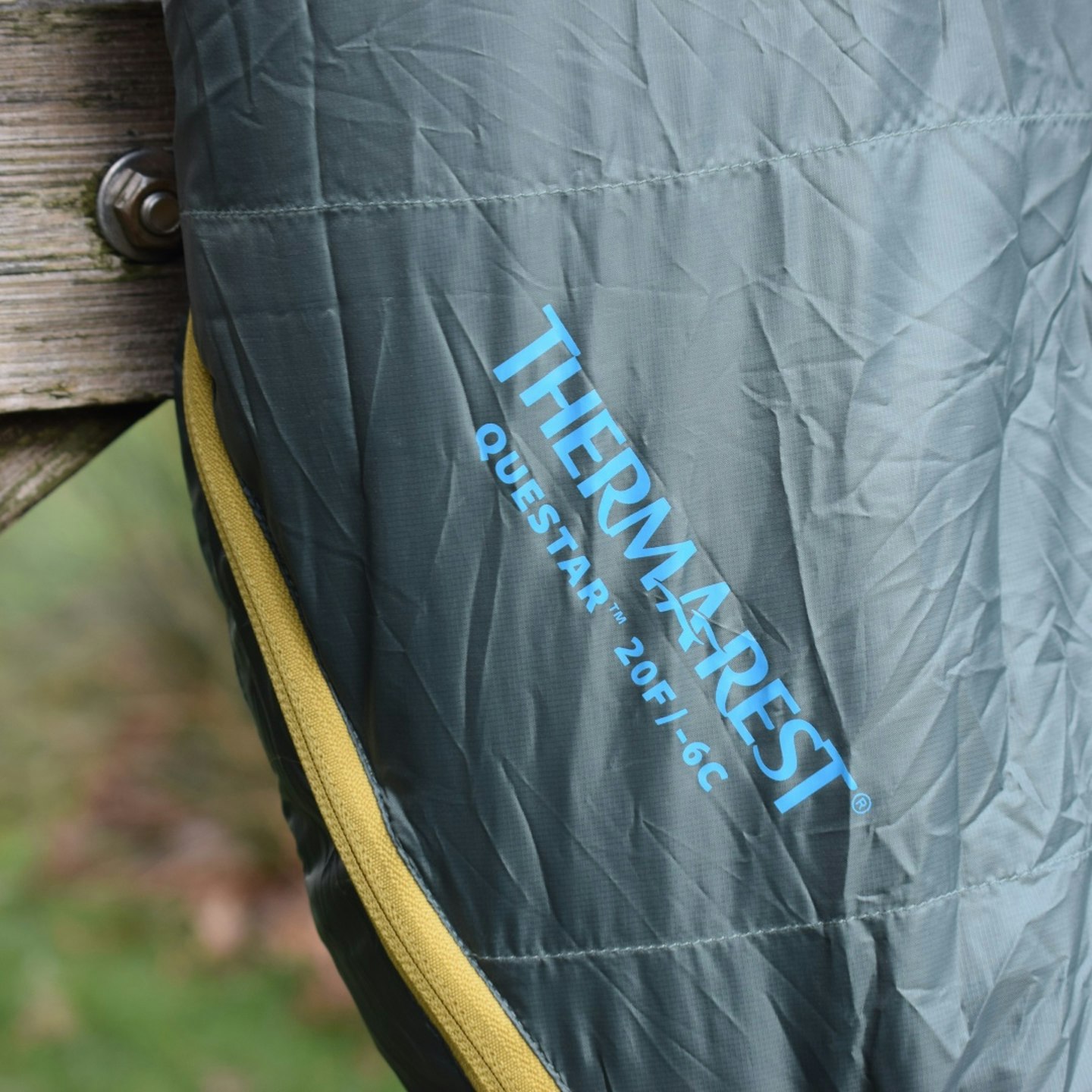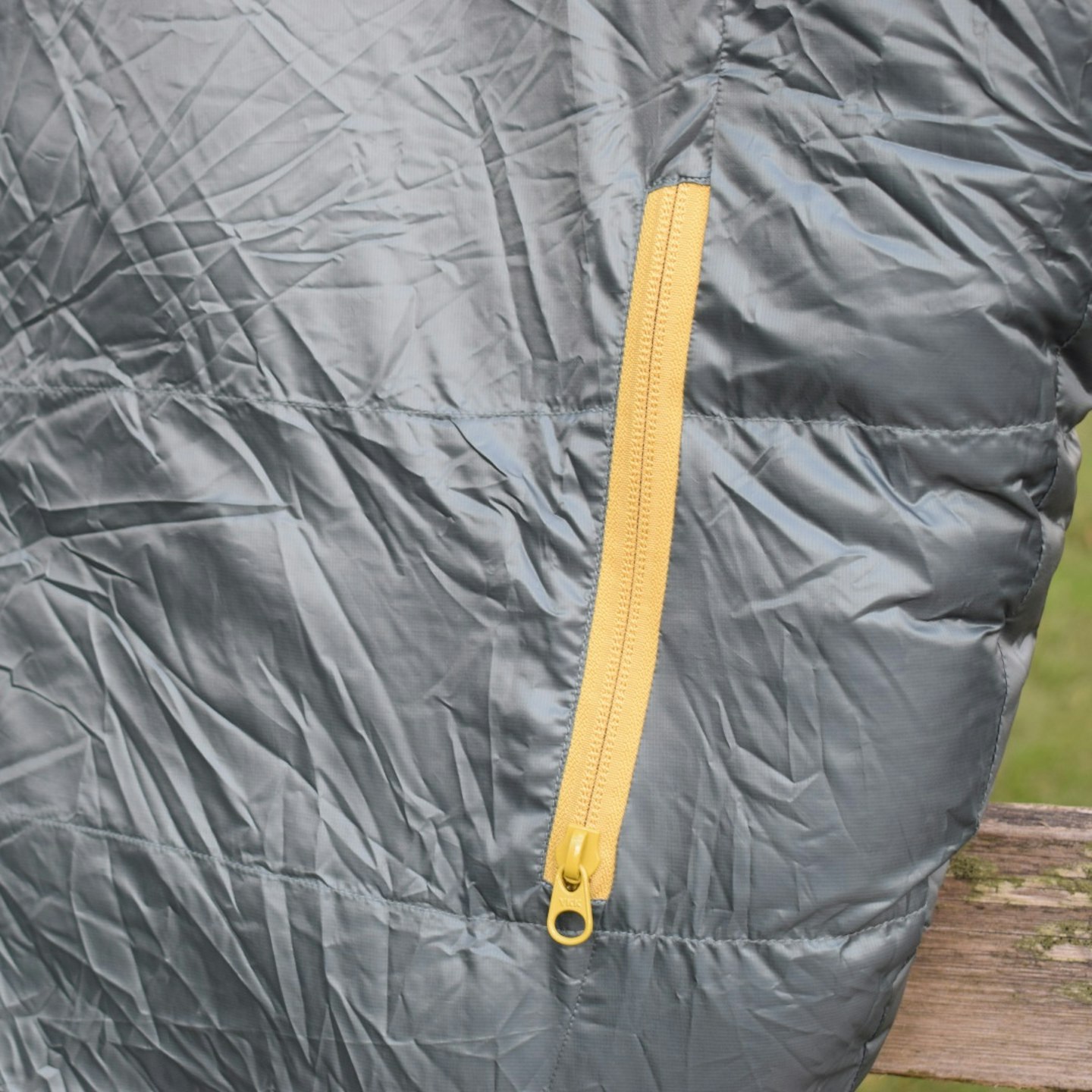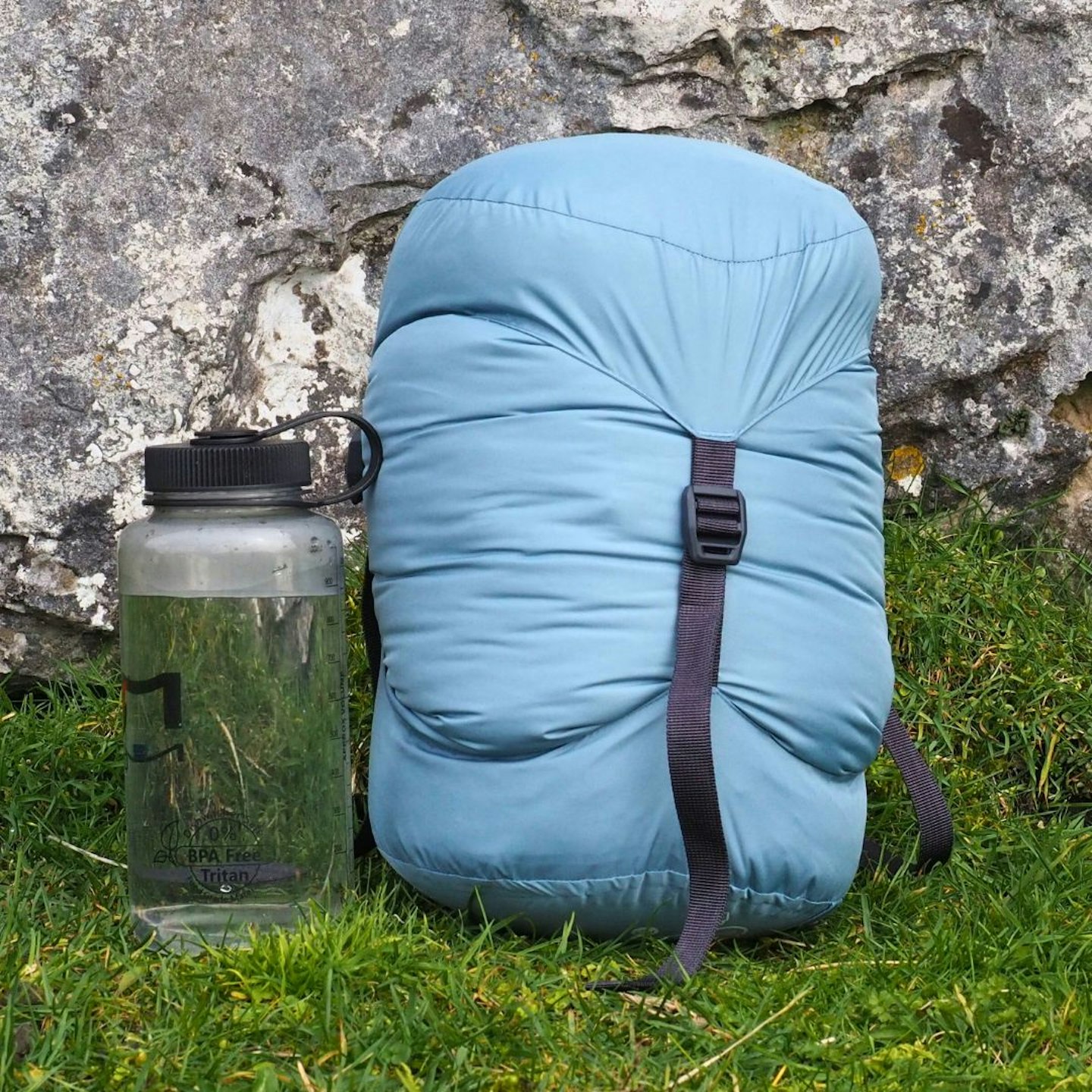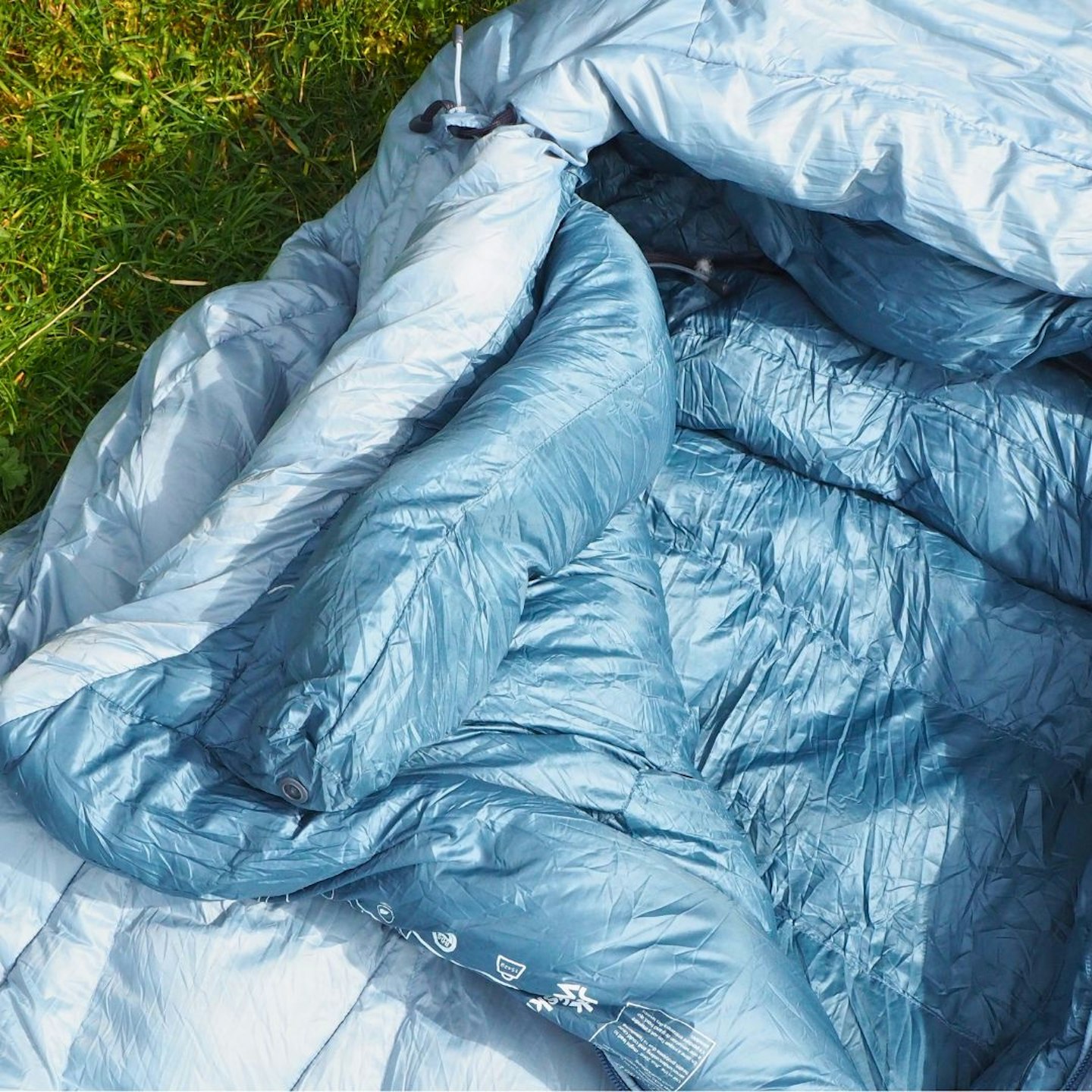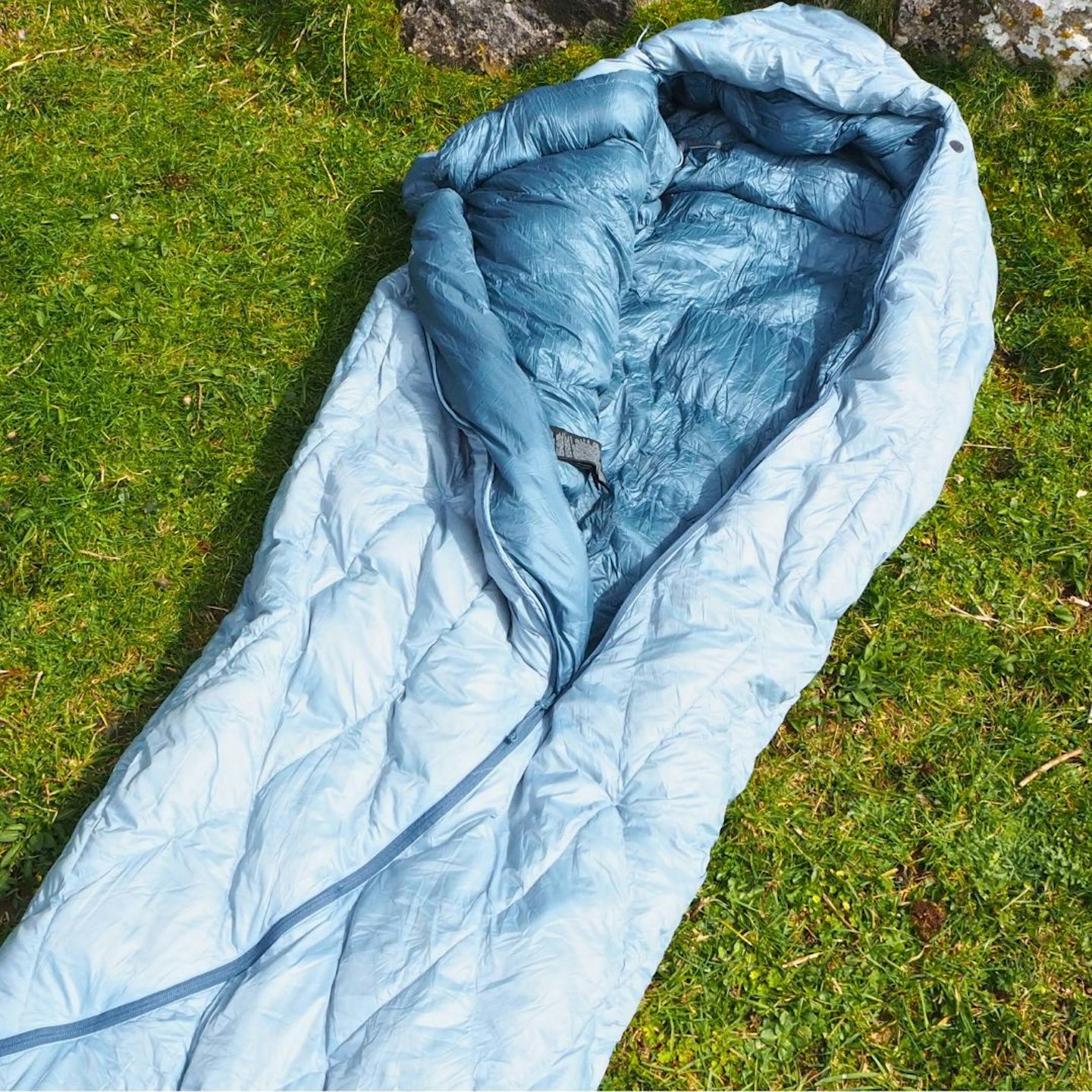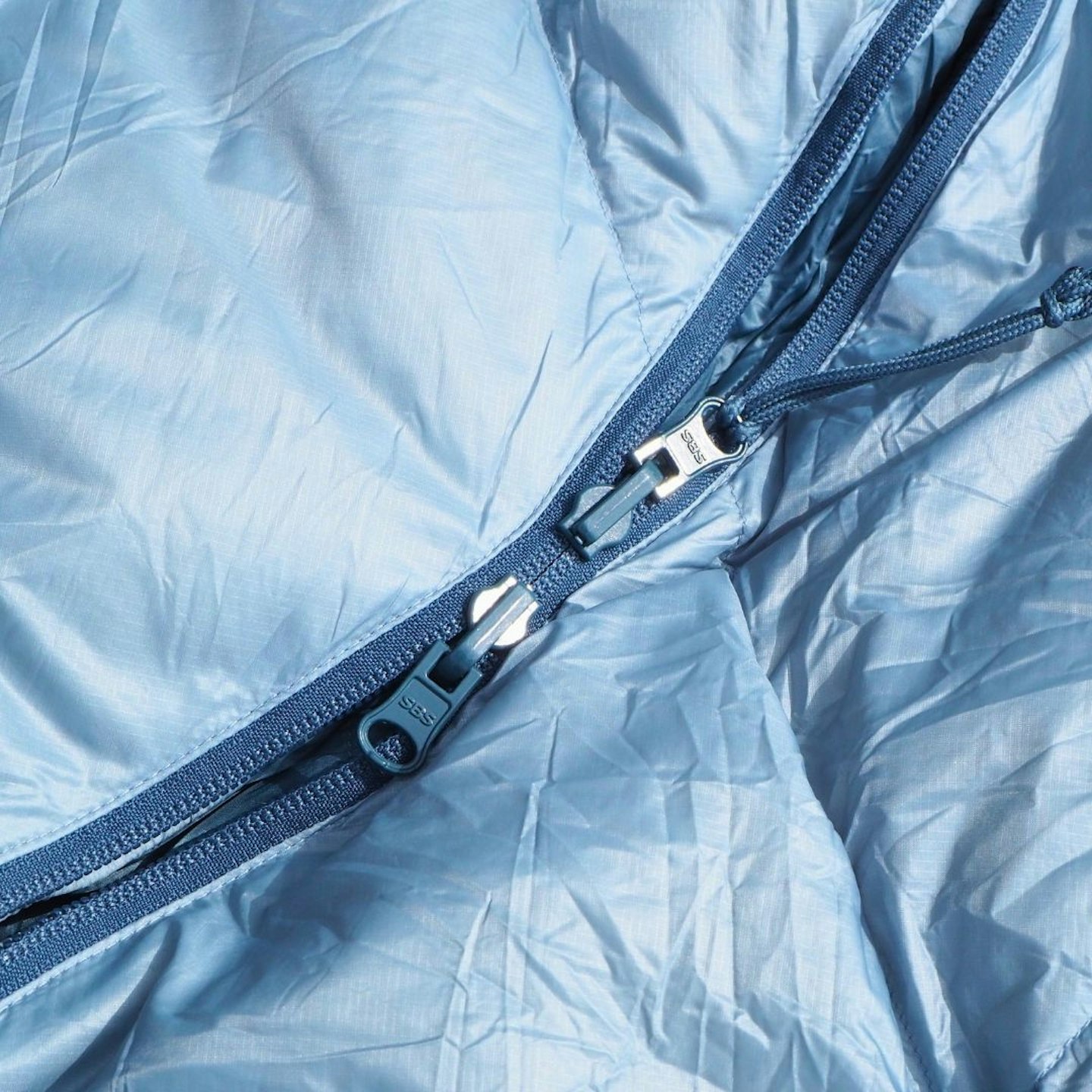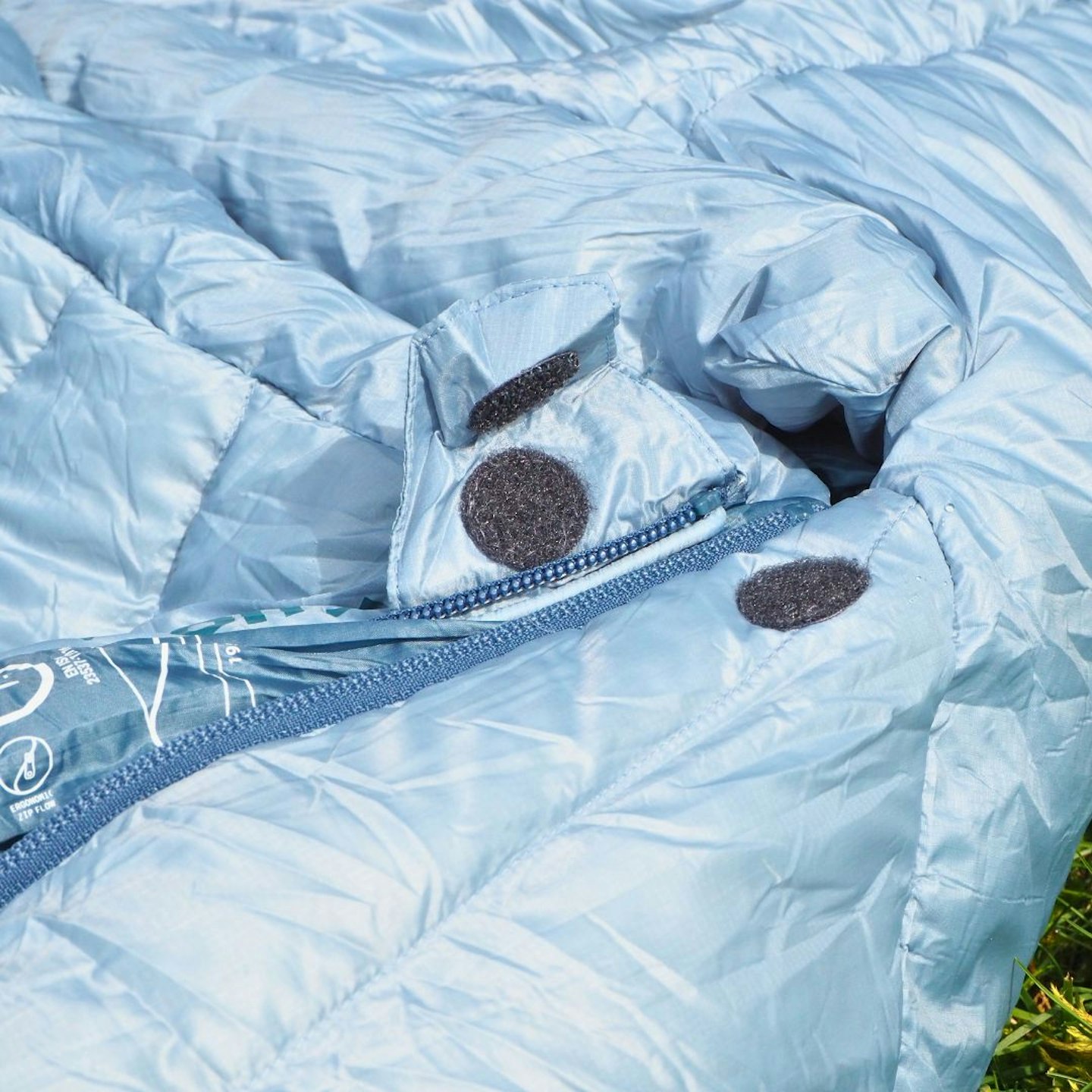Every good day outdoors should end with a well-earned, restful sleep – not shivering until 3am in a woefully thin sleeping bag. And in our experience, a high-quality 3-season sleeping bag will guarantee a good night’s sleep for most of the year.
A 3-season sleeping bag is the most popular sleeping bag in terms of seasonality because it is designed for use between early spring and late autumn.
Compared to winter sleeping bags, they're pretty versatile. In truth, the 3-season category for sleeping bags covers a broad range of weights and temperatures.
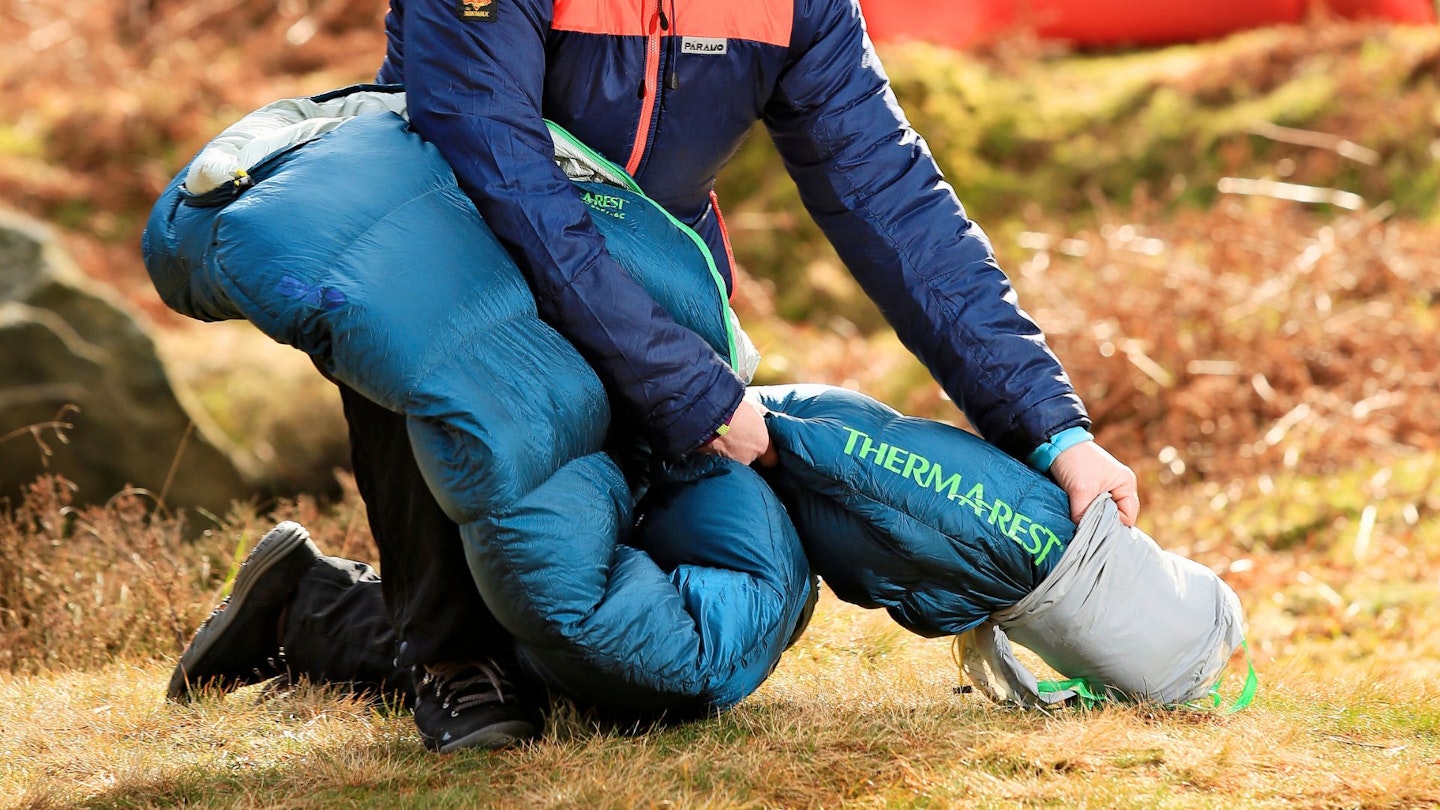
Some campers will opt for a warmer 3-season bag and use it year-round, but it may be too warm in spring and summer. Other campers will choose an ultralight 3-season bag ideal for spring and summer, but they may feel too cold in the shoulder seasons.
That said, choosing a bag you’ll be warm enough in can be tricky. The comfort and lower limits are the best indicators, but they should be used as a guide only; if you tend to feel the cold badly, give yourself a buffer with the temperature ratings.
What are the best 3-season sleeping bags of 2025?
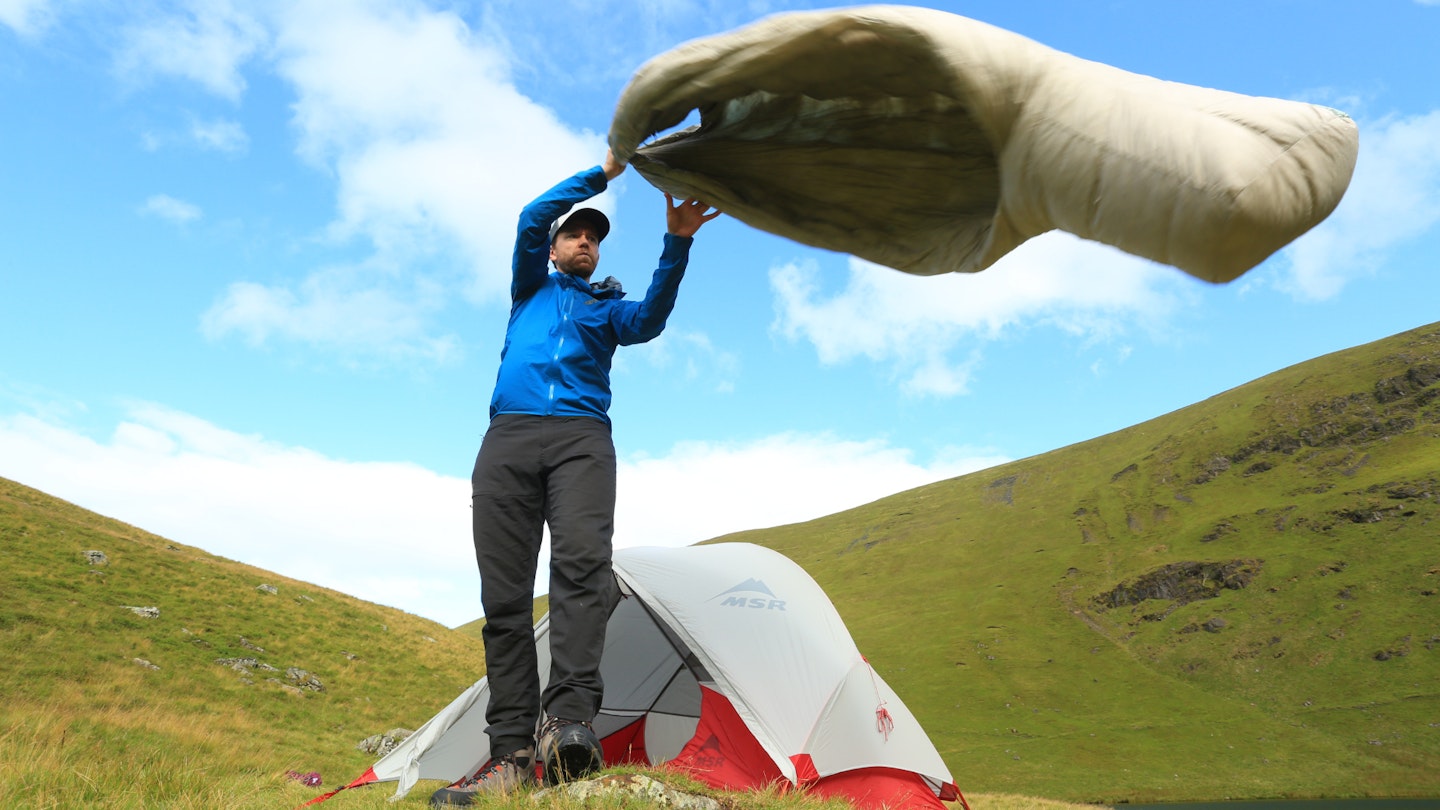
Most bags we've reviewed are available in different lengths and widths, as well as women’s specific models. Bags with a tapered ‘mummy’ style are narrower and cut out cold spots better but can feel restrictive.
Others have a roomier, more rectangular design, which some campers find comfier. As you could well be carrying it up a mountain, it’s also important to aim for a bag with the lowest weight and most compact pack size within your specific temperature and price range.
From down-filled cocoons to synthetic duvets, below are our in-depth reviews of the best sleeping bags for use from early spring to late autumn.
How we tested the best 3-season sleeping bags
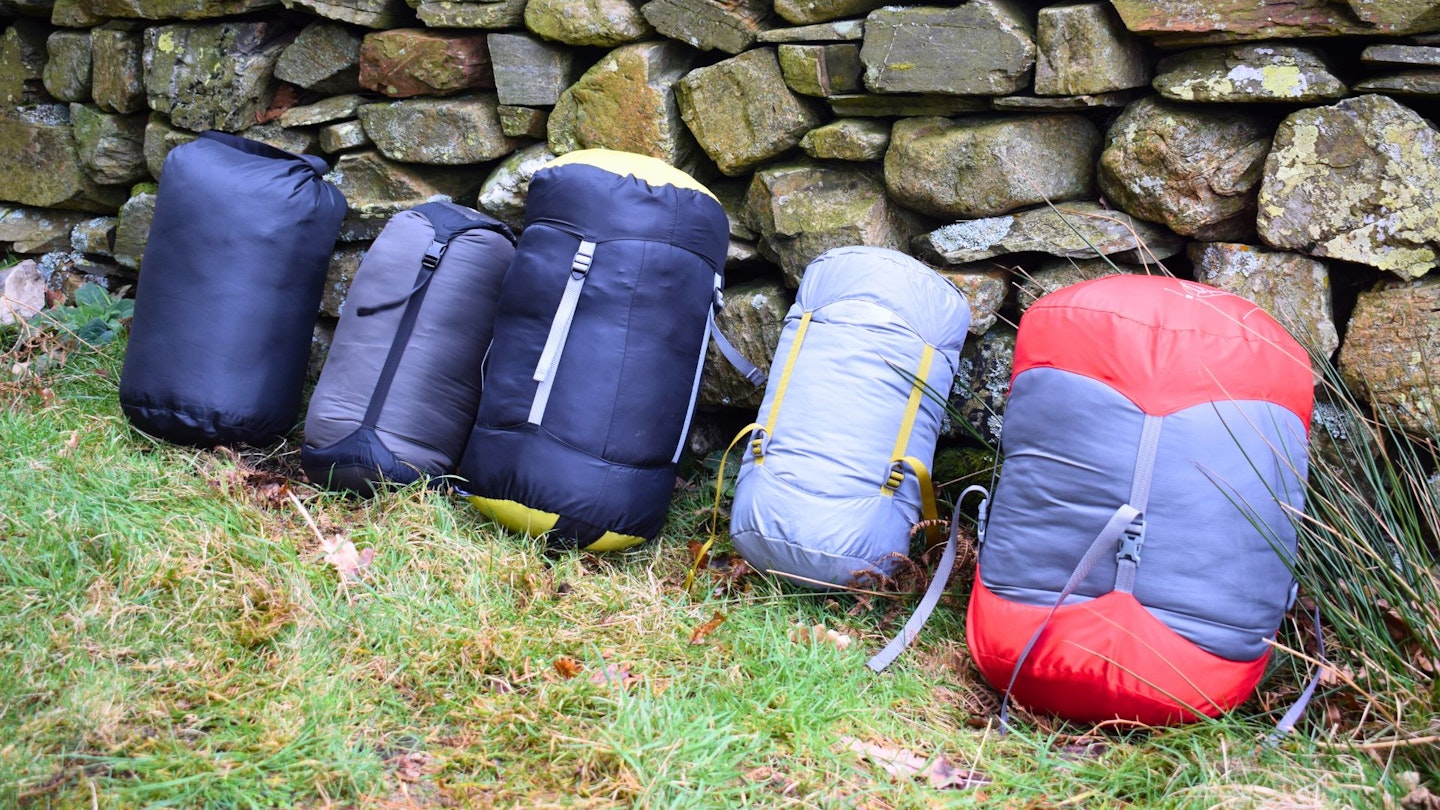
Most of the sleeping bags recommended here were tested by James Forrest. James is a freelance outdoor writer and gear tester who has been contributing to LFTO and Trail magazine for the last few years and is one of the most well-known outdoor writers in the UK.
James tested these sleeping bags in a mix of weather conditions. He carefully assessed the technical performance of each sleeping bag and graded them in terms of comfort, warmth, features and value for money. Click here to learn more about how we treat outdoor kit.
The best 3-season sleeping bags reviewed:
In our experience testing gear from Sea to Summit over the years, we've consistently found their products to be impressive, and the Spark SPIII is no exception. Although entering retirement in 2024, this premium down sleeping bag still stands out for its exceptional warmth-to-weight ratio, providing superb insulation without the restrictive feel common in many mummy-shaped ultralight bags.
Insulated with 850FP hydrophobic goose down, the Spark SPIII excels even in damp conditions, thanks to a PFC-free UltraDry treatment. With a generous 430g fill weight, it achieves a comfort rating of -2°C and a lower limit of -8°C while maintaining a remarkably light total weight of just 665g.
The bag's shell and lining fabrics are constructed from superlight 10D nylon, and its box-wall baffle construction ensures maximum down loft and minimises cold spots. Unlike many ultralight bags that can feel constricting, the Spark SPIII offers more wriggle room, enhancing overall comfort without sacrificing warmth.
In terms of features, the Spark SPIII is quite modest but still has the important stuff including a two-way zip for ventilation and an easy-cinch hood. Its comfort and versatility make it a top choice for wild-camping and multi-day backpacking trips throughout much of the year, earning it our esteemed Gear of the Year 2024 award.
Read our full Sea to Summit Spark SPIII review
Pros
- More internal room compared to rivals
- Super lightweight
- Excellent warmth-to-weight ratio
Cons
- Lightweight fabrics are a little delicate
| Sizes: | Regular (183cm), Long (198cm) |
| Packed size: | 35 x 15cm |
| Weight: | 665 (reg), 745g (long) |
| Insulation: | RDS-certified 850-fill goose down w/ UltraDry treatment |
| Materials: | 10D nylon shell and lining |
| Temperature rating: | Comfort -2°C | Limit -8°C |
Rab’s Neutrino sleeping bags have a longstanding and stellar reputation. Hand-filled in Derbyshire, they now feature PFC-free DWR treatments and more recycled materials. In addition to the standard temperature ratings, the Neutrino 400 also has a ‘Rab Sleep Limit’ of -7C based on Rab’s “real-world assessment of a sleeping bag's useable temperature limit”.
Insulation is provided by 400g of high-lofting 800 fill power European goose down, and you’ll be hard pushed to find a bag with a better warmth-to-weight ratio. Rab uses down with Nikwax’s hydrophobic fluorocarbon-free finish, ensures it dries quicker, absorbs less water, and retains its loft better when damp.
The tapered mummy design has a narrow, tight cut. Some may find it too restrictive, but it does help eliminate cold spots and maximise thermal efficiency. It also keeps packsize and weight to a minimum. An adjustable neck baffle has a close fit designed to decrease any heat loss, and the hood can be cinched in for a fine-tuned fit.
The ¾ length YKK main zipper has a synthetic filled baffle to trap warmth, while a small zippered internal stash pocket provides useful for storage. All the zippers have anti-snag guards to help prevent the zipper ‘catching’ on the liner or shell.
Check out the women's version here
Read our full Rab Neutrino 400 review
Pros
- Tried and tested design
- Excellent warmth-to-weight ratio
- Several sizes and versions
- Decent sustainability credentials
Cons
- Narrow mummy shape won't suit everyone
| Sizes: | Regular, Long, Long Wide, Women's |
| Packed size: | 35 x 23cm |
| Weight: | 775g |
| Insulation: | 400g of 800-fill RDS goose down w/ PFC-free Nikwax hydrophobic treatment |
| Materials: | 20D Pertex Quantum recycled nylon w/ PFC-free DWR |
| Temperature rating: | -1°C comfort | -7°C comfort limit |
Compared to down bags, synthetic sleeping bags offer better value, easier maintenance, and improved insulation when wet. The synthetic fill in Robens’ Glacier III -9C is a fluffy 100% polyester known as AirThermo. This delivers a cosy sleeping experience even in sub-zero temperatures and the Glacier’s EN/ISO lab test temperature ratings are superb given the price. The downside is that the bag weighs 1795g, which is on the heavy side.
Robens has placed a higher grade of insulation on the top of the bag where you need it most. Insulation on the underside tends to be less important because you gain some warmth from your sleeping mat, plus any insulation under your body tends to be crushed and less thermally efficient. Robens’ ‘loft expander system’ separates the inner lining from the outer shell to enhance loft space and retain heat, providing enhanced warmth in the upper half of the bag.
The taper of the design is not particularly harsh, striking a nice balance between technicality and comfort. The two-way YKK zipper has a full-length insulated baffle to keep the cold out and an anti-snag guard. The hood is well designed and can be adjusted via a drawcord for a fine-tuned fit, while a thick baffle around the neck minimises draughts.
Read our full Robens Glacier III -9C review
Pros
- Great value
- Impressive temperature stats
- PFC-free
- Good design
Cons
- Reasonably heavy
- Not the most packable
- Only one size
| Sizes: | One size |
| Packed size: | 36 x 26 cm |
| Weight: | 1.795kg |
| Insulation: | AirThermo polyester |
| Materials: | 40D 290T nylon shell, 30D 290T polyester Taffeta lining |
| Temperature rating: | Comfort -3°C | Limit -9°C |
US brand Nemo is known for its innovative approach, and the Forte 20F offers some unique design features. It is roomier than most sleeping bags, with more space at the knees and shoulders for a less-constricted feel.
A sleeve-like pocket for sliding in a camping pillow keeps it neatly in place, while Nemo’s ‘Blanket Fold draft collar’ – a large, thick flap of insulation – blocks cold air when tucked in, or mimics the cosy comfort of a mattress at home when folded down. Two 53cm vents across the top of the sleeping bag, with zippers on the top and on the underside and a layer of fabric between the two, allow you to micro-adjust your temperature inside the sleeping bag.
The fill is Zerofiber PCR (100% polyester) synthetic insulation. This is a 100% recycled insulation, ensuring the bag has excellent eco credentials. The regular length Forte weighs 1550g, which is about par for the course when it comes to synthetic sleeping bags. The 46x24cm packed size is bulkier than ideal.
The temperature ratings are solid for a bag at this price, but the roomy fit of the Forte 20F and the subsequent risk of ‘cold spots’ means we’d suggest mostly using this sleeping bag in slightly warmer climes.
Check out the women's version here
Read our full Nemo Forte 20F Endless Promise Synthetic Sleeping Bag review
Pros
- Innovative design
- Clever features
- Roomy
- Copes well with damp
- Good for side sleepers
- Sustainable
Cons
- Too heavy and bulky for some hikers
- Not as thermally efficient as a mummy sleeping bag
| Sizes: | Regular, Long, Women's Regular, Women's Long |
| Packed size: | 46 x 24cm, 46 x 26cm (women's) |
| Weight: | 1.55kg (regular), 1.68kg (long), 1.65kg (women's reg), 1.84kg (women's long) |
| Insulation: | Recycled Synthetic Zerofiber PCR |
| Materials: | Recycled and bluesign-approved 30D polyester shell, recycled 20D polyester lining w/ PFC-free DWR |
| Temperature rating: | Comfort -1°C | Limit -7°C (Comfort -6°C | Limit -13°C women's) |
This sleeping bag is a maverick. There’s no zip, but the bag still opens wide thanks to a curved, wraparound ‘comforter’ – a duvet-like flap that pulls over your upper body. A big overlap between the comforter and the bag’s edge prevents draughts, while the zipperless design makes getting in and out easy and delivers a sensation akin to your bed at home.
Insulation is provided by 800 fill power goose down, housed in chunky box-wall baffles. However, all the insulation is over the top and sides of the body – there’s no down whatsoever on the underside. The logic is that any down on the under your body will be squashed, lose its loft, and be ineffective as insulation. Instead, there’s a sleeve to accommodate your sleeping bag, but you will need a well-insulated mat with a decent R-Value to guarantee you stay warm.
This approach does keep the weight down though, and the temperature ratings suggest the warmth-to-weight ratio is excellent. However, the design and lack of hood drawcord does mean that cold spots may be a problem, so it’s best not to push the limits of the bags cool weather performance. Plus, its ease of ventilation makes it better suited to milder temperatures.
Check out the women's version here
Read our full Sierra Designs Cloud 800 review
Pros
- Innovative quilt-like and zipperless design
- Impressive temperature ratings
- Many venting options
Cons
- Risk of cold spots
- No hood drawcord
| Sizes: | Regular, long, women's |
| Packed size: | 38 x 19cm |
| Weight: | 880g |
| Insulation: | 419g of 800-fill RDS goose down w/ PFC-free DriDown treatment |
| Materials: | 15D ripstop nylon fabric |
| Temperature rating: | Comfort -3°C | Limit -10°C |
Sea to Summit is updating its sleeping bag product line for 2024, and here we’ve put the new Ascent -9C to the test. It’s a great all-rounder, featuring 750+ fill power down with a -2C comfort rating for a weight of 1020g. These are solid stats offering reliable warmth, particularly considering the bag only weighs a smidge over 1kg.
The insulation is 750+ fill power goose down, housed in chunky box-wall baffles. This is not bad, but neither is it exceptional, and given the high price of the Ascent we might have expected a higher grade of down. An Ultra Dry Down treatment has been applied to the insulation, which helps improve water resistance, ensuring it performs better and retains its warmth and loft, even in humid and damp conditions.
You get a fitted hood, a chunky draught collar, and a down-filled draught tube covers the two-way zippers (full-length to the toe box on one side and a half-length zipper on the other side) to keep the cold out and the heat in. The dual zipper design means the bag vents brilliantly and that you can get your arms out to sort gear or make a brew without leaving the warmth of your bag.
Check out the women's version here
Read our full Sea To Summit Ascent Down Sleeping Bag -9°C review
Pros
- Adaptable zip configuration
- PFC-free
- Roomy
- Slightly tough outer fabric than some superlight rivals
Cons
- Some rivals have better warmth-to-weight ratio
| Sizes: | Regular, Long, Women's Regular, Women's Long |
| Packed size: | 40 x 20cm |
| Weight: | 1.02kg (regular), 1.16kg (long), 1.25kg (women's reg), 1.4kg (women's long) |
| Insulation: | RDS 750-fill goose down w/ PFC-free Ultra-Dry Down treatment |
| Materials: | Recycled 20D nylon shell and lining, 10D hood and footbox |
| Temperature rating: | Comfort -2°C | Limit -9°C |
Near Zero might not be a household name in the outdoor industry, but this Arizona-based brand caught our attention with its ready-to-hike bundles that neatly pack into the brand's 55-litre backpack, featuring a unique internal organisational system.
During our testing of a Near Zero bundle, we had the opportunity to test their NZ 20 sleeping bag, and it left us thoroughly impressed as a lightweight three-season option offering an impressive warmth-wot-weight ration and good value. Insulated with 850-fill power down and a remarkably lightweight 10D nylon shell fabric, the NZ 20 boasts a comfort temperature of -2°C while weighing just 800g in its regular size variant.
The very high quality of the down ensures excellent loft, though some may find the mummy fit too restrictive. However, Near Zero offers three different sizes to accommodate various heights.
The trade-off of its impressively low weight is that shell and lining materials do feel quite delicate and demand careful handling for longevity. Nonetheless, its impressive performance and relatively affordable price make it a standout choice in the market of lightweight sleeping bags.
Read our full Near Zero bundle review
Pros
- Very high quality down for the price
- Can be used most of the year
- Good shape and comfort
Cons
- Delicate main material
| Sizes: | Short, Regular, Long |
| Packed size: | 28 x 19cm |
| Weight: | 700g (short), 800g (regular), 900g (long) |
| Insulation: | RDS 850-fill duck down |
| Materials: | 10D taffeta nylon |
| Temperature rating: | Comfort -2°C | Limit -8°C |
The Questar is perhaps the most affordable of Therm-a-Rest’s down sleeping bags, and its temperature ratings are excellent at this price. The insulation is 650 fill power duck down, and while this is not a particularly high quality of down (other bags use 700, 800 or even 900 fill power) there’s a lot of it; the fill weight is 540g, which is pretty considerable. The packed size and weight of the Questar is good, but not exceptional for a down-filled sleeping bag, so gram counters may want to look elsewhere.
The tapered, mummy-shaped design is technical but generous, providing extra wriggle room compared to some other bags. The box baffled construction maximises loft and minimises cold spots, while zoned insulation improves the warmth-to-weight ratio, with 60% of the insulation is placed on the top and sides (where you need it most) and 40% on the underside.
Therm-a-Rest’s SynergyLink system features two ultralight straps that connect the sleeping bag to your sleeping mat your mat, ensuring you don’t slide off it and improving thermal efficiency.
Other features include a heat-trapping draught collar at the neck, a full-length zipper draught tube, snag-free main zipper, cinchable hood and external zip pocket, as well as a super-cosy down-lined footbox (Therm-a-Rest’s wonderfully named ‘Toe-asis’).
Read our full Therm-a-Rest Questar 20F/-6C Down Sleeping Bag review
Pros
- Excellent design
- Good features
- Decent temperature ratings for price
Cons
- Not the highest fill power down
| Sizes: | Small, Regular, Long |
| Packed size: | 23 x 19cm |
| Weight: | 840g (small), 990g (regular), 1.12kg (long) |
| Insulation: | 650-fill RDS duck down w/ PFC-free Nikwax Hydrophobic treatment |
| Materials: | 20D polyester lining and shell w/ DWR |
| Temperature rating: | Comfort 0°C | Limit -6°C |
What we found of the Wolftrail sleeping bag (brilliant name) from Jack Wolfskin is that it's a dependable all-round 3-season sleeping bag suitable for most situations.
At about 1.5kg (for the long 195cm version we tested) and packing down to 37 x 22cm, the Wolftrail is far from the lightest or most compact option here. But on the plus side, it is more durable than the ultralight models, and with a comfort limit down to -7°C, it performs well too.
We really liked the Wolftrail's unique details such as the S-shaped SmooZip, which is very ergonomic and opens the bag wide making it easy to get in and out of. It also has a neat stash pocket next to the hood where you can put your pillow (there's a small internal security pocket too).
The Wolftrail has sound sustainability credentials too. It's PFC-free, bluesign-approved, and uses a fully recycled main fabric. Jack Wolfskin is also a Fair Wear Foundation member with 'Leader' status denoting its commitment to worker welfare.
Check out the 180cm version here
Read our full Jack Wolfskin Wolftrail Down -7 review
Pros
- Good all-round comfort
- Decent temperature ratings
- Tougher fabrics than ultralight alternatives
- Clever, ergonomic features
- Good eco credentials
Cons
- Heavier and more bulky than many rivals
| Sizes: | 195cm, 180cm |
| Packed size: | 37 x 22cm |
| Weight: | 1.54kg |
| Insulation: | RDS 700-fill duck down |
| Materials: | Recycled 20D nylon shell and lining |
| Temperature rating: | Comfort 0°C | Comfort limit -7°C |
In terms of bulk, weight, performance, and price the Apex 3 is quite similar to the Robens Glacier III -9C. They're both synthetic-insulated 3-season sleeping bags rated for the low negatives and both with a good price.
The Apex 3 is a more aggressive mummy shape than the Robens, and arguable a tad warmer because of that. Overall, it's a comfy fit, but only comes in one size (like the Robens), which is a bit annoying but not the end of the world.
We liked that the lining, shell, and insulation is all fully recycled (the lining and shell are made from fishing nets) and also feels nice against the skin. It's also quite durable.
The downside is that this sleeping bag is quite heavy and bulky, measuring over 40cm in length and over 25cm in width when packed down and weighing over 2kg.
Read our full Vango Apex 3 review
Pros
- Good shape and comfort
- Ideal entry-level backpacking sleeping bag
- Fabric is more cosy than on many nylon sleeping bags
- Fully recycled fabrics
- Copes well with damp
- Great value
Cons
- Heavier than most competitors
- Only one size
| Sizes | One size |
| Packed size | 42 x 27cm |
| Weight | 2.05kg |
| Insulation | EcoLoft (100% recycled) |
| Materials | Fully recycled Polair EcoNet 20D nylon |
| Temperature rating | Comfort -3°C | Limit -10°C |
How do I buy a 3-season sleeping bag?
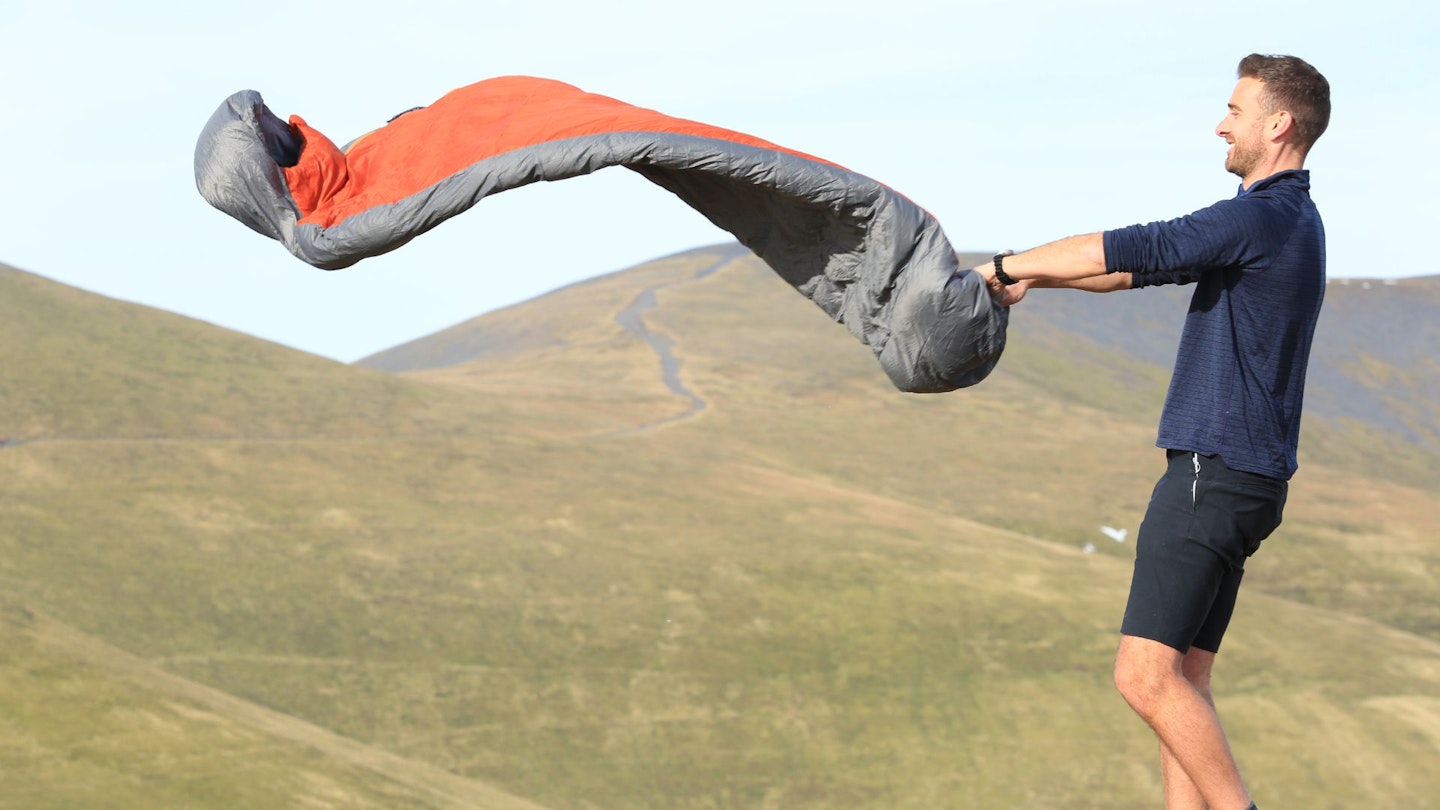
What temperatures are 3-season sleeping bags for?
A 3-season sleeping bag is intended for use in the cold (but not freezing) temperatures, which makes them suitable for most months of the year, from spring through to autumn, hence '3-season'. In terms of bag comfort temperatures this means from around the low positives (Celsius) to the low negatives to cater for peoples' varying susceptibility to cold.
So, what do temperature ratings mean?
Sleeping bags are commonly graded by the EN/ISO standard, stating temperature ratings as ‘comfort’ (warm enough for the average female), ‘comfort limit’ (warm enough for the average male), and ‘extreme’ (you won’t die, but it’ll be very uncomfortable). To confuse matters, some brands also publish their own in-house temperature ratings.
The comfort and lower limits are the best indicators of a bag’s realistic temperature range, but they should only be used as a guide.
Is down or synthetic insulation best?
Down – the lofty, fluffy stuff underneath the feathers –is the lightest and most efficient form of insulation and also the most compressible (so is great for stuffing into your backpack). The drawbacks are that down is expensive and loses its insulating qualities when wet.
Although all the down-filled gear we test and recommend on LFTO use RDS down, there may be wider animal welfare considerations that are of importance to you.
Synthetic - Synthetic insulation is typically bulkier and heavier than down, but it's also less expensive and doesn’t absorb water, which makes them a good choice for wetter conditions.
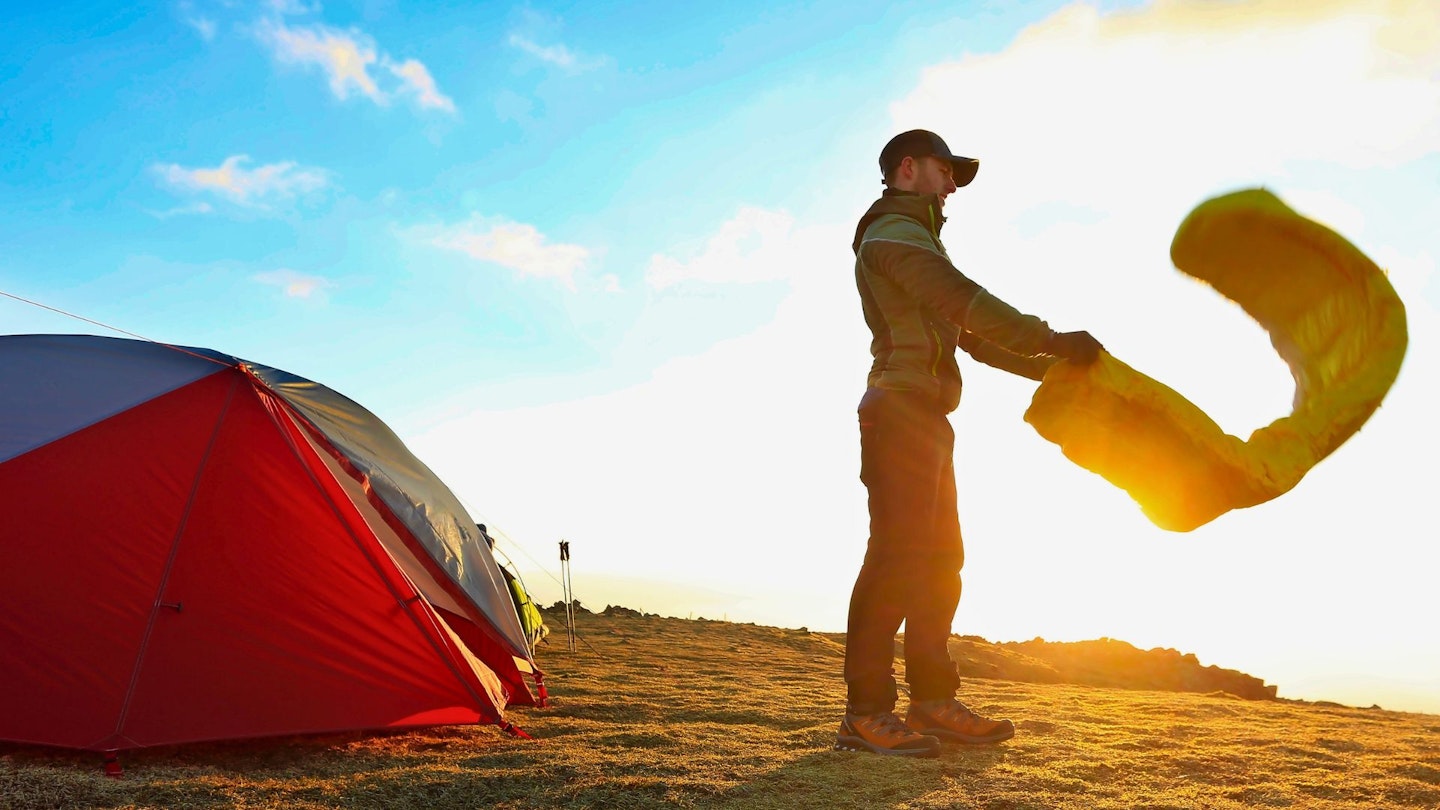
What is fill power and fill weight?
Fill power is a rating system for down that measures compressibility and loft (fluffiness) – and gives an indication of its insulating properties. A higher fill power indicates better quality down and a greater warmth-to-weight ratio.
Fill weight is the amount of down in a bag, measured in grams. The higher the fill weight, the warmer a bag will be. This means that it’s important to check both the fill weight and fill power. A sleeping bag with only 650 fill power down can still be as warm as a bag with 900 fill power down, for example, if it has a higher fill weight (ie more down) inside the bag.
What about pack size and weight?
Naturally, a lightweight sleeping bag with a small pack size is easier to stash and carry around in your rucksack. Down-filled sleeping bags have the best compressibility and warmth-to-weight ratios, but some technical synthetic sleeping bags aren't far off. Look for a bag with a compression stuffsack to really cinch down the pack size.
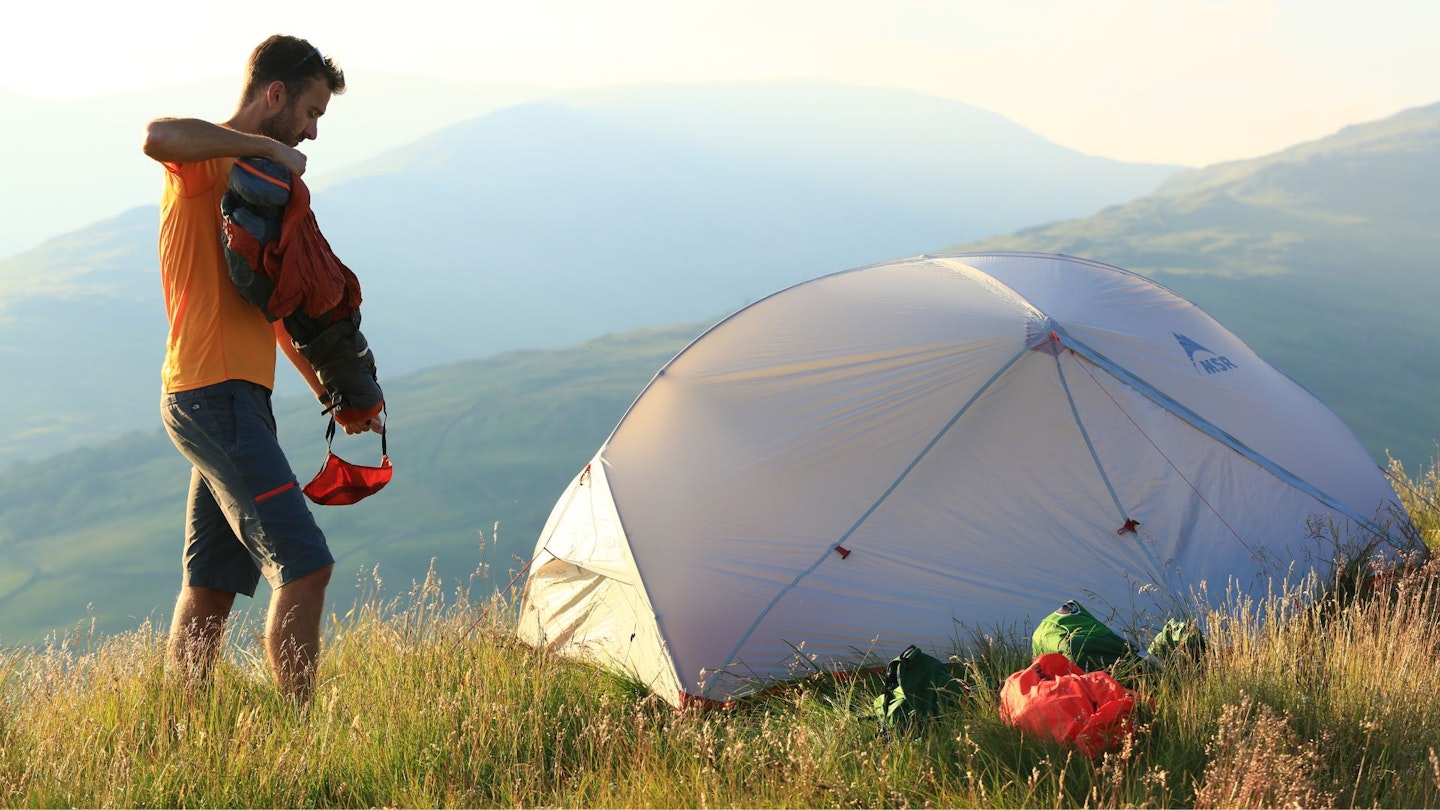
What sleeping bag shape is best?
Most bags are available in different lengths or widths, as well as women-specific fits. ‘Performance mummy’ bags are slim fitting and highly tapered to save weight and boost thermal efficiency.
Some may find them restrictive though, in which case, look for a less tapered shape that offers more room to move. Just be aware the more roomy a sleeping bag is, the heavier, bulkier, and less thermally efficient it will be.
Are there different ways a sleeping bag is constructed?
Most down bags use a box-wall construction, which traps the fill inside brick-shaped baffles. Larger baffles give more space for insulation to loft, but smaller baffles can stop the fill from migrating and getting bunched in one place, leading to uneven insulation.
Angled baffles and zoned construction can reduce cold spots. Synthetic bags often use a baffle-free construction that features a single or double sheet of insulation.
In terms of materials, shell and lining fabrics are usually made from nylon or polyester. Durable water-resistant (DWR) coatings are often applied to protect the fill. Areas particularly prone to damp, like the base, foot and hood may have additional protection.
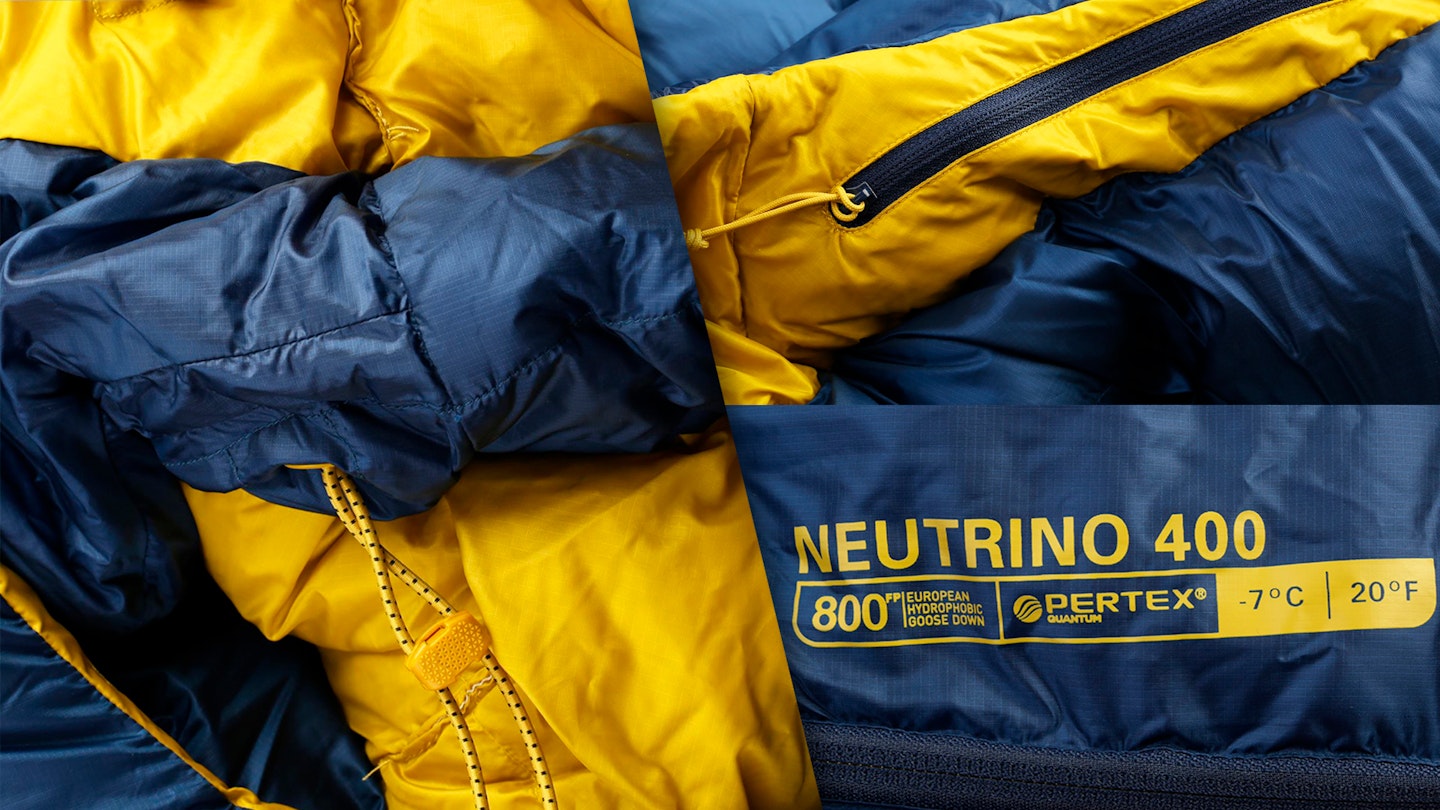
What important features should I look for?
Hood: An insulated and closefitting hood makes a big difference in cold conditions. Look for a bag with hood drawcords so you can adjust the fit, but ensure they are comfortably placed and easy to use.
Shoulder baffle: A neck or shoulder baffle helps to lock heat in by preventing warm air from escaping around the face.
Storage sack: In addition to a stuffsack, many bags now come with a larger cotton or mesh storage sack that allows the bag to loft and breathe when not in use. This prevents musty odours and damage to the fill caused by long-term compression.
Zip: A full-length zip allows you to vent heat and makes getting in and out easier, though a shorter zip saves weight. Zips usually have a baffle to prevent cold spots, but make sure it doesn’t snag. Note that if you are right-handed, a zip on the left side is generally easier to use and vice versa. If you’re a side sleeper, make sure the zip won’t end up underneath your body, as this can be uncomfortable.
How do I make sure my sleeping bag is sustainable?
Start with the materials. Look for sleeping bags that use RDS down (most do) or recycled insulation if buying a synthetic sleeping bag (a select few brands are even starting to use recycled down). Then try and find a sleeping bag that uses recycled material for the main shell and lining materials.
Many sleeping bags, especially those intended for hiking and backpacking, treat the outer materials and often the down insulation with a water-repellent treatment. These treatments used to use harmful PFCs, and many still do, but many brands are increasingly using PFC-free treatments, which are much more environmentally friendly.
You can go further and look into a brand's overall sustainability credentials. Those with easily accessible sustainability information and third-party certifications such as B Corp, Bluesign, Fair Wear, or Fair Trade ensure the brand is operating in a more socially and environmentally responsible manner.
You can keep the fabric of your sleeping bag in good condition to ensure it lasts as long as possible and get it repaired when required. Then, at the end of its life, down sleeping bags can be recycled through some brands such as Alpkit and Rab.
How do I clean a sleeping bag and repair it?
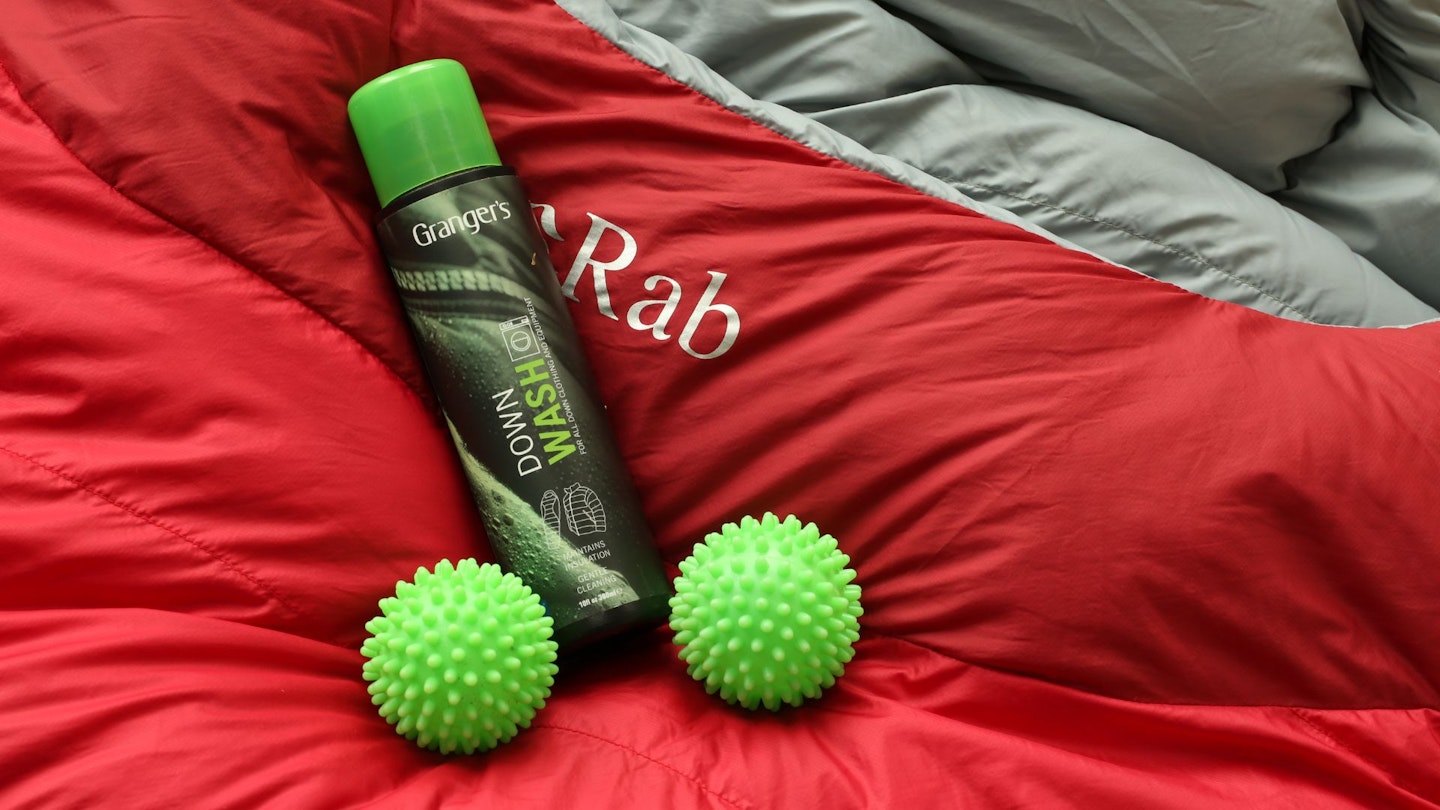
Cleaning sleeping bags and storing them correctly when not in use are both very straightforward but need to be done correctly in order to enjoy many years of use.
To ensure the sleeping bag maintains its loft, store your sleeping bag in a larger storage bag at home rather than the compression sack. This is especially important for down. Many sleeping bags come with storage and compression bags, but if yours doesn't come with the latter, you can use an old pillowcase or something similar.
In terms of cleaning, use either Grangers Down Wash or Nikwax Down Wash.Direct (below). Both of these products are eco-friendly and specifically designed for cleaning insulated outdoor gear. They clean the fabrics and insulation and restore breathability. Regular laundry detergents don't do this and leave behind residue that inhibits water repellency, breathability, and insulation loft.
If your sleeping bag gets a rip or a broken zip, for example, these can easily be repaired. Repair specialists such as Lancashire Sports Repairs repair all types of outdoor gear. Similarly, many outdoor retailers, such as Cotswold Outdoor have repair services, as do brands including Rab and Alpkit.
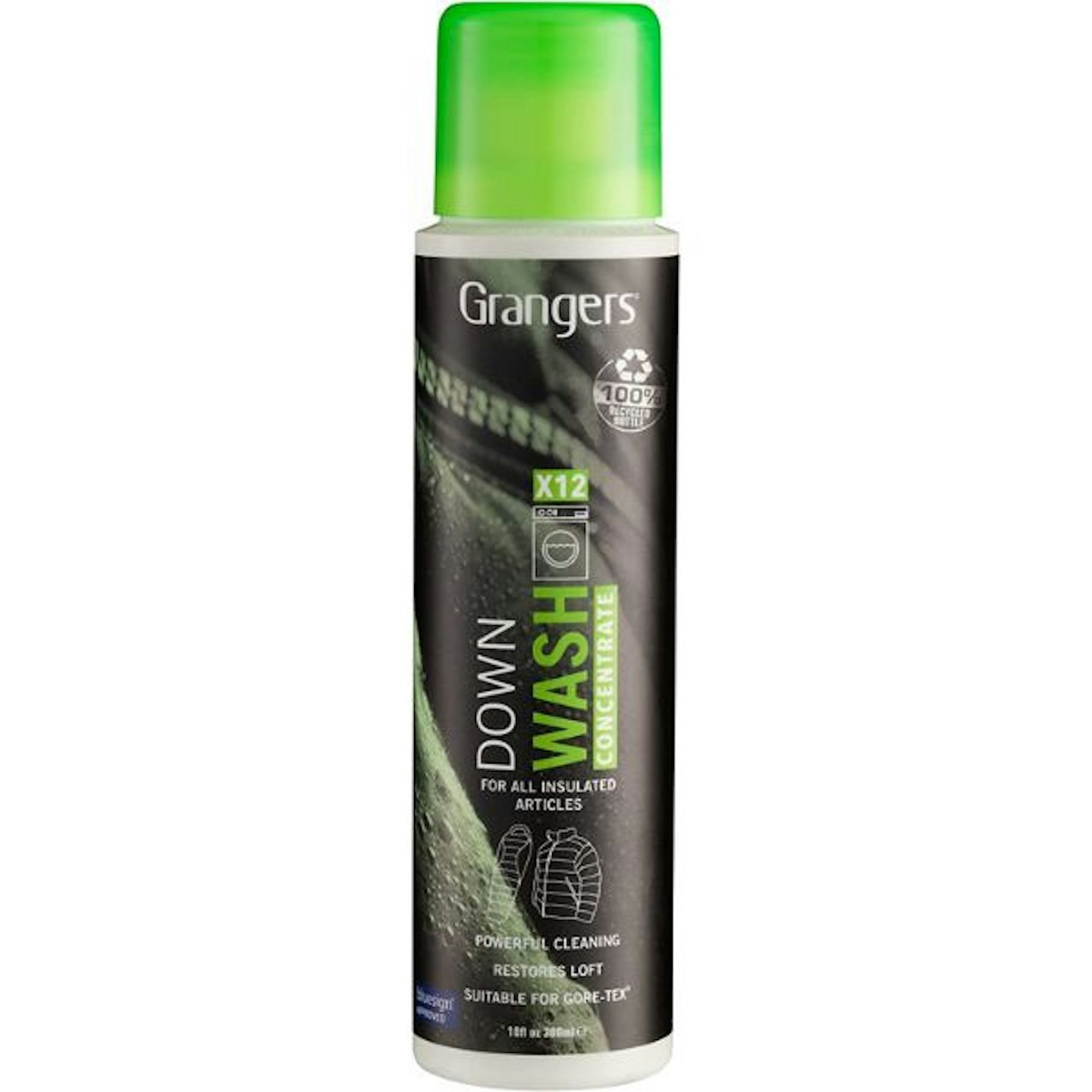
About the author
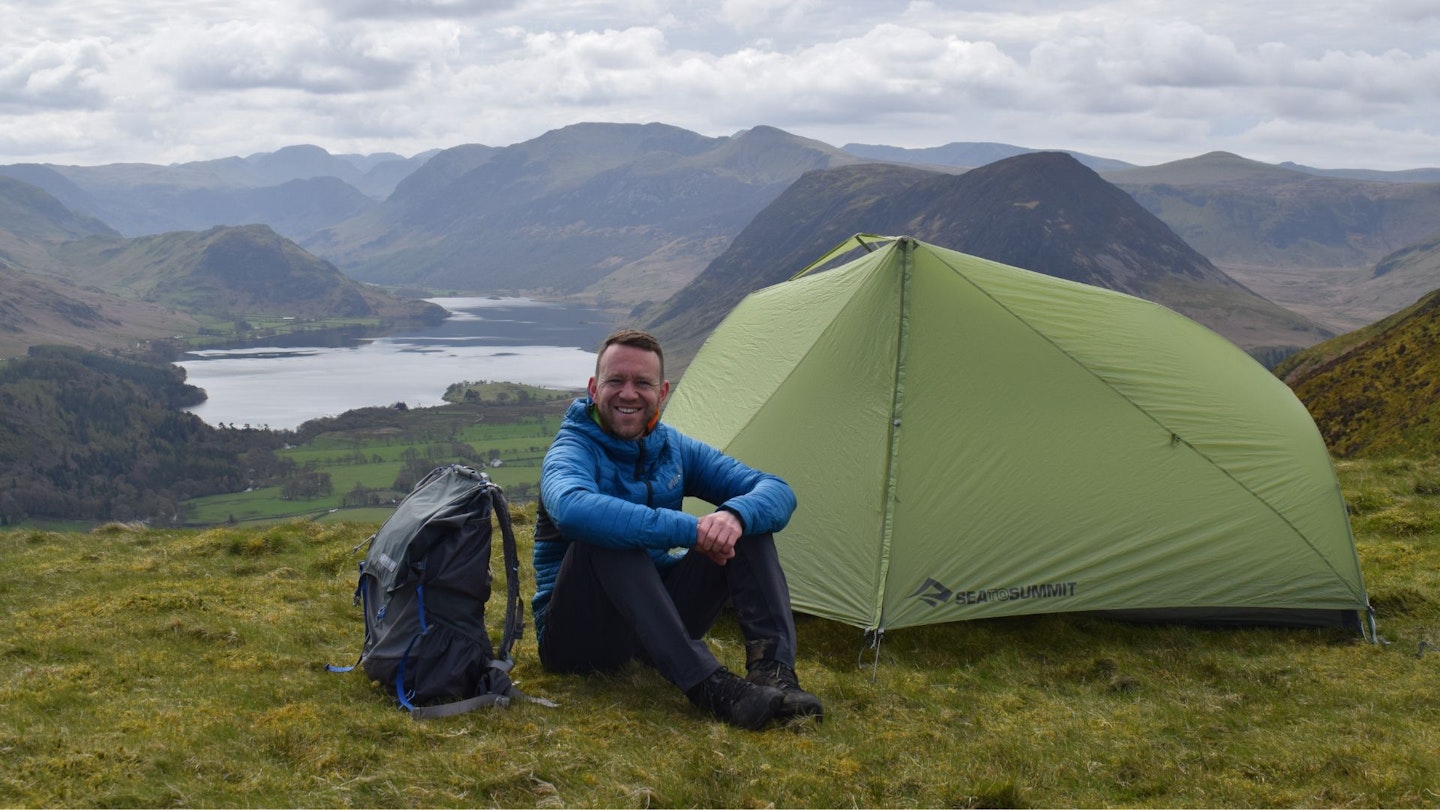
James Forrest is a prolific peak bagger and long-distance walker who’s one of the most high-profile outdoor writers in the UK. He writes regular features and route guides for Trail and has been one of our main gear testers for the last few years.
James is based on the edge of the Lake District so when he isn’t off on his latest crazy adventure or challenge, he’s walking in his local fells. He reviews every type of outdoor kit and is a real authority on everything you need for wild camping and packing light for a multi-day walk.

